The groovy aesthetic of the 1970s continues to captivate modern homeowners with its bold blend of earthy warmth and psychedelic flair. This iconic decade revolutionized interior design by embracing natural materials, rich textures, and fearless color combinations that challenged conventional decorating rules. From the luxurious comfort of velvet furniture to the organic appeal of rattan pieces, these design elements created spaces that felt both sophisticated and refreshingly relaxed. The era's emphasis on conversation, connection, and self-expression translated into homes that prioritized comfort and personality over rigid formality. Today's designers are rediscovering these timeless principles, adapting 1970s design ideas to create spaces that feel both nostalgic and thoroughly contemporary. Whether you're drawn to the decade's signature earth tones or its bold geometric patterns, these design concepts offer endless possibilities for transforming your home into a stylish sanctuary that celebrates individuality and creative expression.
1. Velvet Furniture for Luxurious Comfort
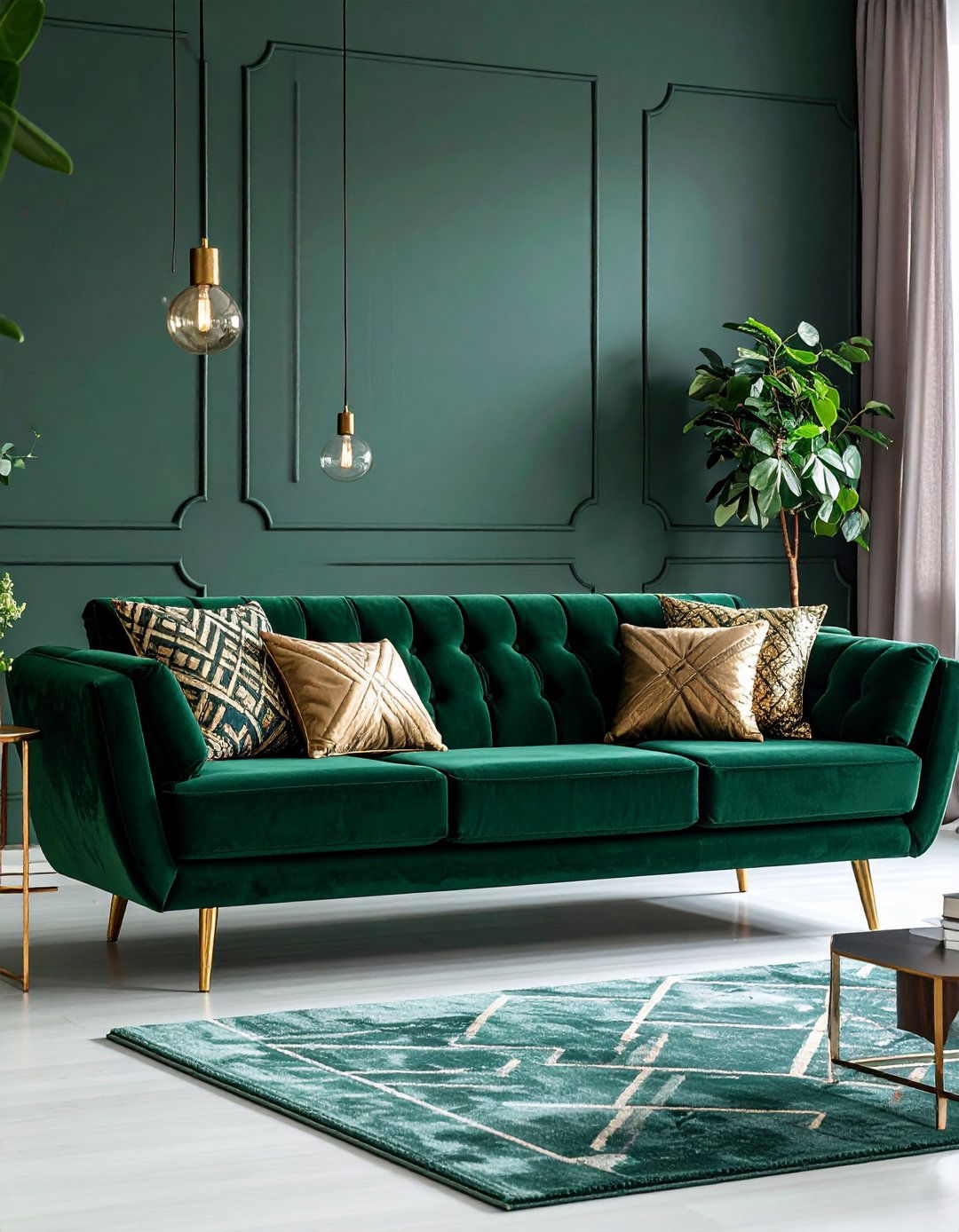
Sumptuous velvet upholstery instantly transforms any living space into a sophisticated sanctuary reminiscent of 1970s glamour. This rich fabric adds depth and texture while providing unmatched comfort for relaxation and entertaining. Choose deep jewel tones like emerald green, sapphire blue, or warm burgundy to capture the decade's bold aesthetic. Velvet sofas and armchairs create natural focal points that anchor room designs beautifully. The material's light-reflecting properties add visual interest throughout the day, changing subtly as natural light shifts. Pair velvet furniture with brass accents and geometric patterns to enhance the retro appeal. Modern interpretations feature stain-resistant treatments that make velvet practical for everyday living, ensuring your 1970s-inspired pieces remain beautiful for years to come.
2. Earthy Color Palettes with Avocado Green
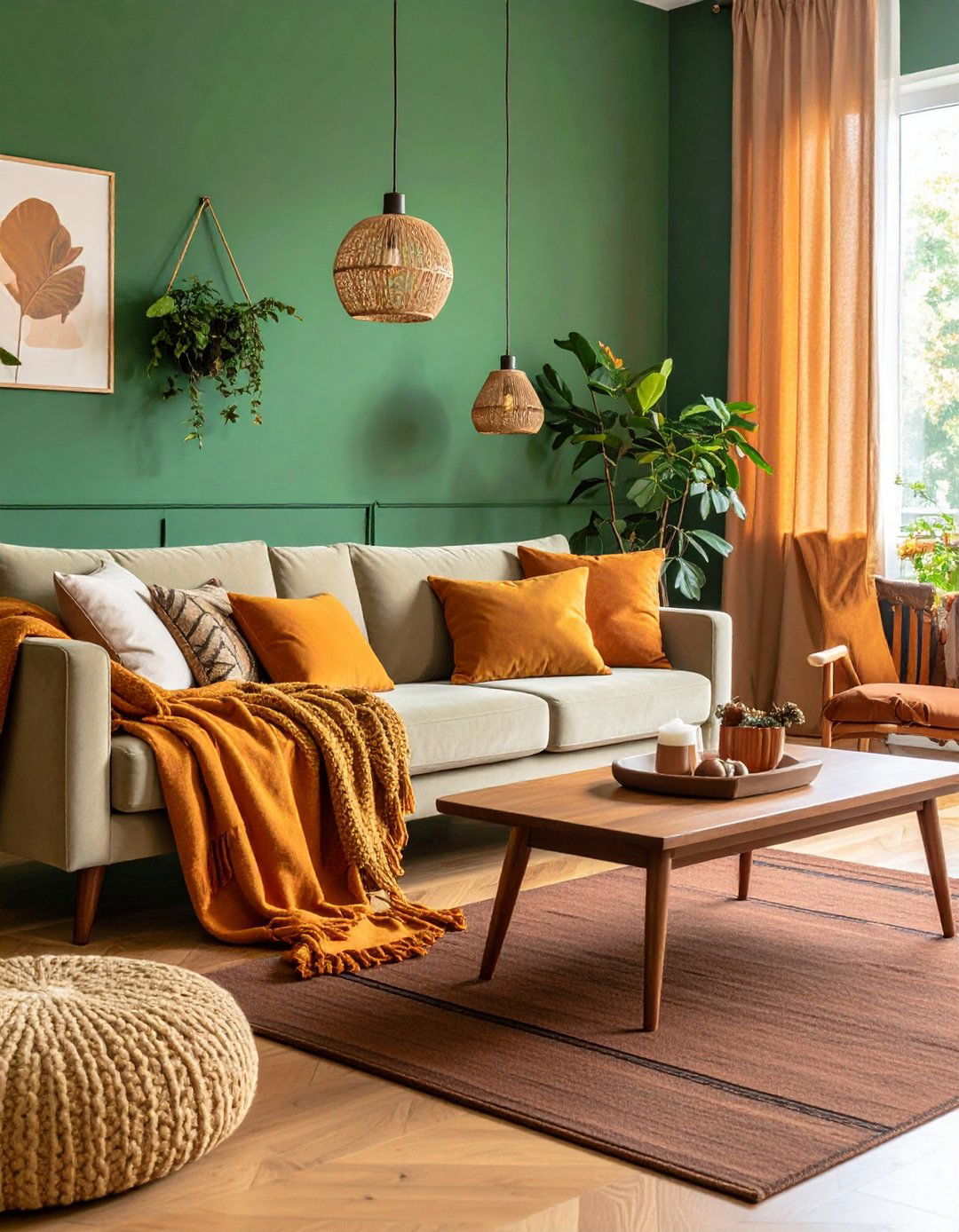
Embrace the quintessential 1970s design approach by incorporating rich avocado green throughout your living spaces. This distinctive shade brings natural warmth and organic sophistication to any room while serving as a perfect foundation for layered color schemes. Complement avocado green with harvest gold, burnt orange, and chocolate brown to create an authentic vintage atmosphere. The color works beautifully on kitchen cabinets, accent walls, or upholstery pieces where it can make a bold statement. Modern interpretations soften the intensity slightly, making avocado green more accessible for contemporary homes. Consider using this earthy hue in bathrooms with brass fixtures for a truly groovy aesthetic. The psychological benefits of green promote relaxation and connection to nature, making it an ideal choice for creating peaceful, restorative environments.
3. Shag Carpeting for Textural Warmth
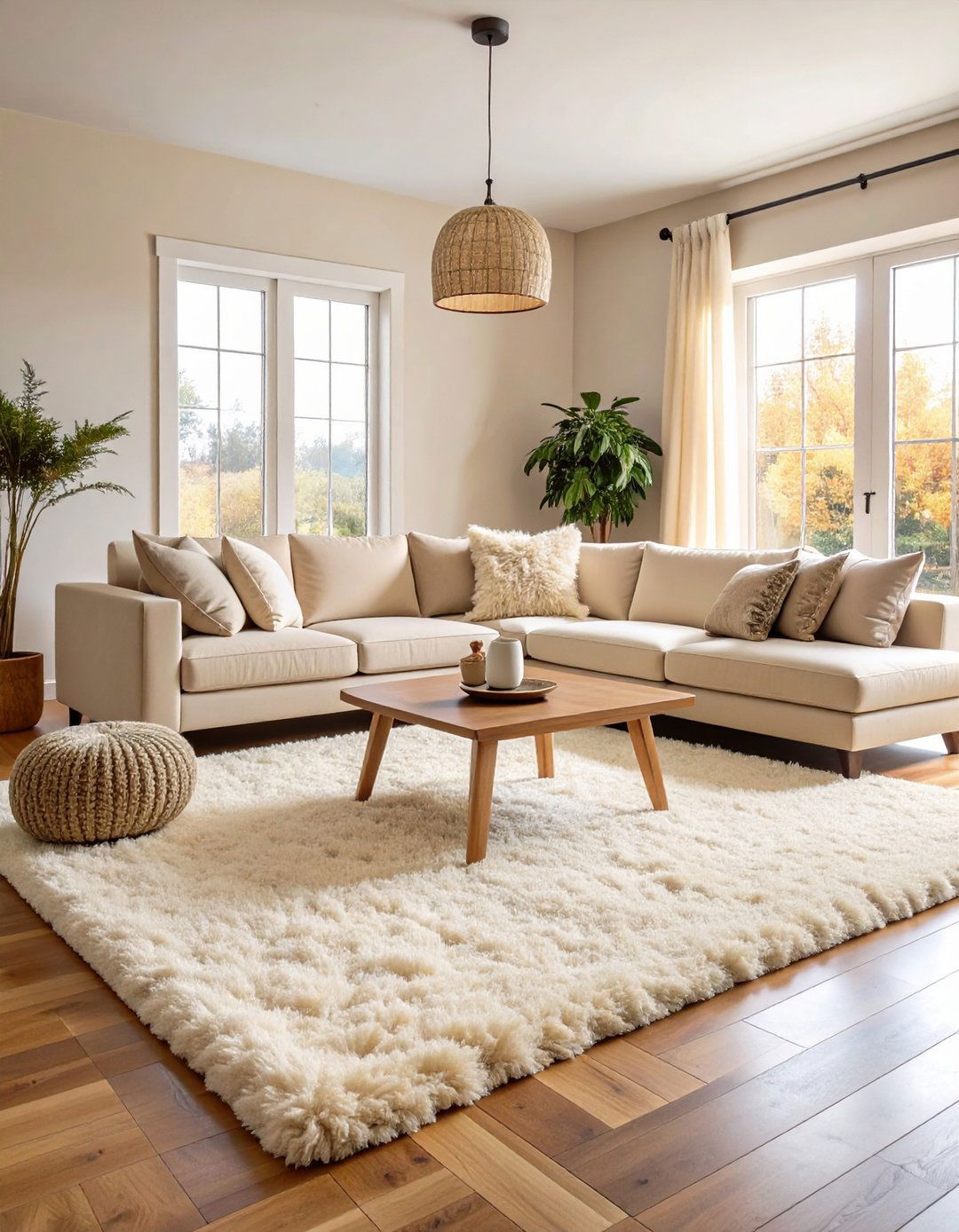
Luxurious shag carpeting epitomizes 1970s design comfort while adding unparalleled texture and visual interest to modern interiors. These high-pile rugs create cozy foundation layers that invite barefoot relaxation and intimate gatherings. Contemporary shag options feature improved materials and construction techniques that maintain the authentic look while offering better durability and easier maintenance. Choose neutral tones like cream or beige for versatile styling, or embrace bold colors like burnt orange or deep teal for dramatic impact. Layer smaller shag rugs over hardwood floors to define seating areas and conversation zones. The tactile experience of walking on plush shag instantly transforms room atmospheres, creating sensory-rich environments that celebrate comfort and indulgence. Modern eco-friendly versions use sustainable fibers while maintaining the distinctive texture that makes shag carpeting so appealing.
4. Rattan Furniture for Natural Elegance
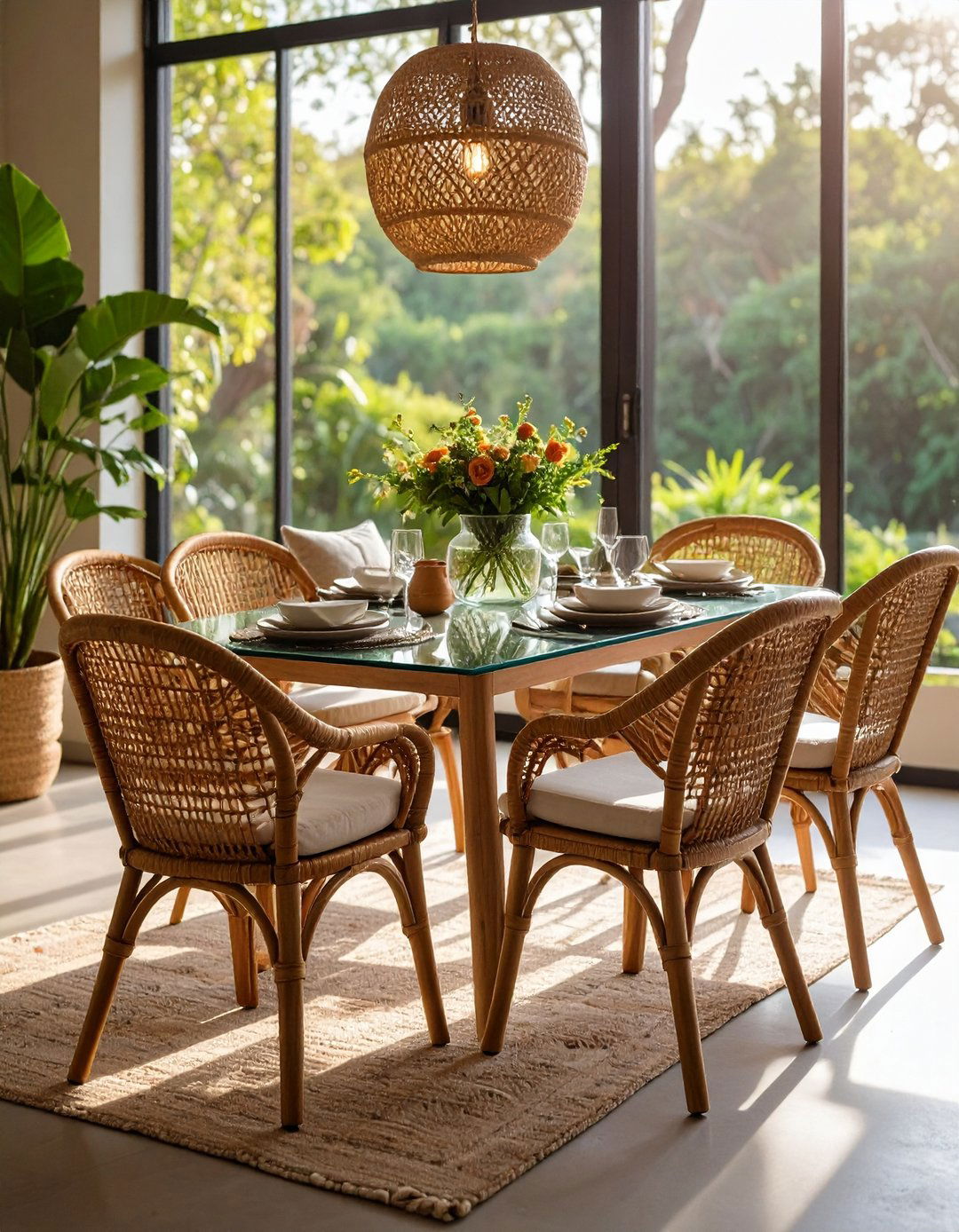
Beautifully crafted rattan furniture brings organic warmth and timeless sophistication to 1970s-inspired interiors. This versatile natural material creates stunning focal points while maintaining the decade's emphasis on comfort and casual elegance. Rattan dining chairs, coffee tables, and accent pieces add textural interest without overwhelming room designs. The material's lightweight nature makes furniture easy to rearrange for different occasions and seasonal changes. Pair rattan pieces with soft cushions in earthy tones or bold geometric patterns to enhance comfort and style. Modern rattan furniture often features improved construction techniques that ensure durability while preserving the authentic handcrafted appearance. The natural variation in rattan's color and texture creates visual depth that complements both neutral and colorful decorating schemes, making it perfect for creating spaces that feel both sophisticated and refreshingly relaxed.
5. Conversation Pits for Intimate Gatherings

Sunken conversation pits represent the social heart of 1970s design philosophy, creating intimate spaces that naturally encourage face-to-face interaction and meaningful connections. These architectural features break up large rooms while maintaining open floor plans that feel both spacious and cozy. Modern interpretations adapt the concept using sectional sofas arranged in square or circular configurations that capture the same communal spirit. Built-in seating with plush cushions and throw pillows creates comfortable gathering spaces perfect for entertaining friends or family relaxation. The lowered perspective changes room dynamics, making conversations feel more intimate and engaging. Consider adding a central coffee table or ottoman to complete the functional layout. Soft lighting from table lamps or pendant fixtures enhances the cozy atmosphere while maintaining the sophisticated aesthetic that makes conversation pits so appealing for contemporary homes.
6. Macramé Wall Hangings for Bohemian Texture
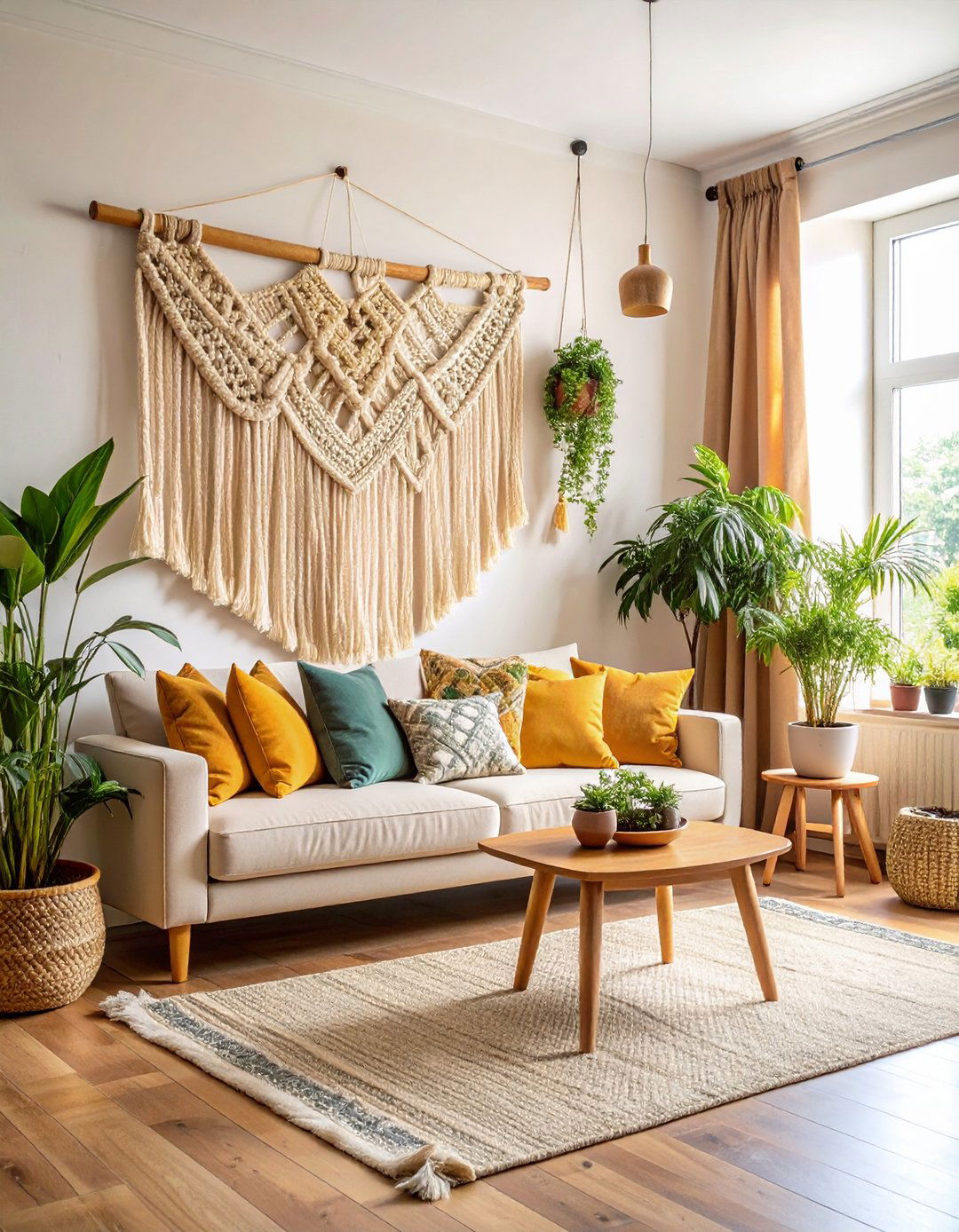
Handcrafted macramé wall hangings capture the free-spirited essence of 1970s design while adding sophisticated texture and organic appeal to modern interiors. These intricate rope artworks create stunning focal points that celebrate craftsmanship and natural materials. Choose large statement pieces for dramatic impact above sofas or beds, or create gallery walls using multiple smaller hangings for layered visual interest. The neutral tones of natural cotton or jute cord complement any color scheme while adding warmth and character to room designs. Modern macramé artists create contemporary interpretations that maintain traditional techniques while exploring new patterns and scale variations. Plant holders in macramé designs serve dual purposes, displaying greenery while adding textural elements to walls. The handmade quality of macramé brings authenticity and personal touch to spaces, making each piece unique while celebrating the 1970s appreciation for artisanal crafts.
7. Geometric Wallpaper Patterns for Bold Drama
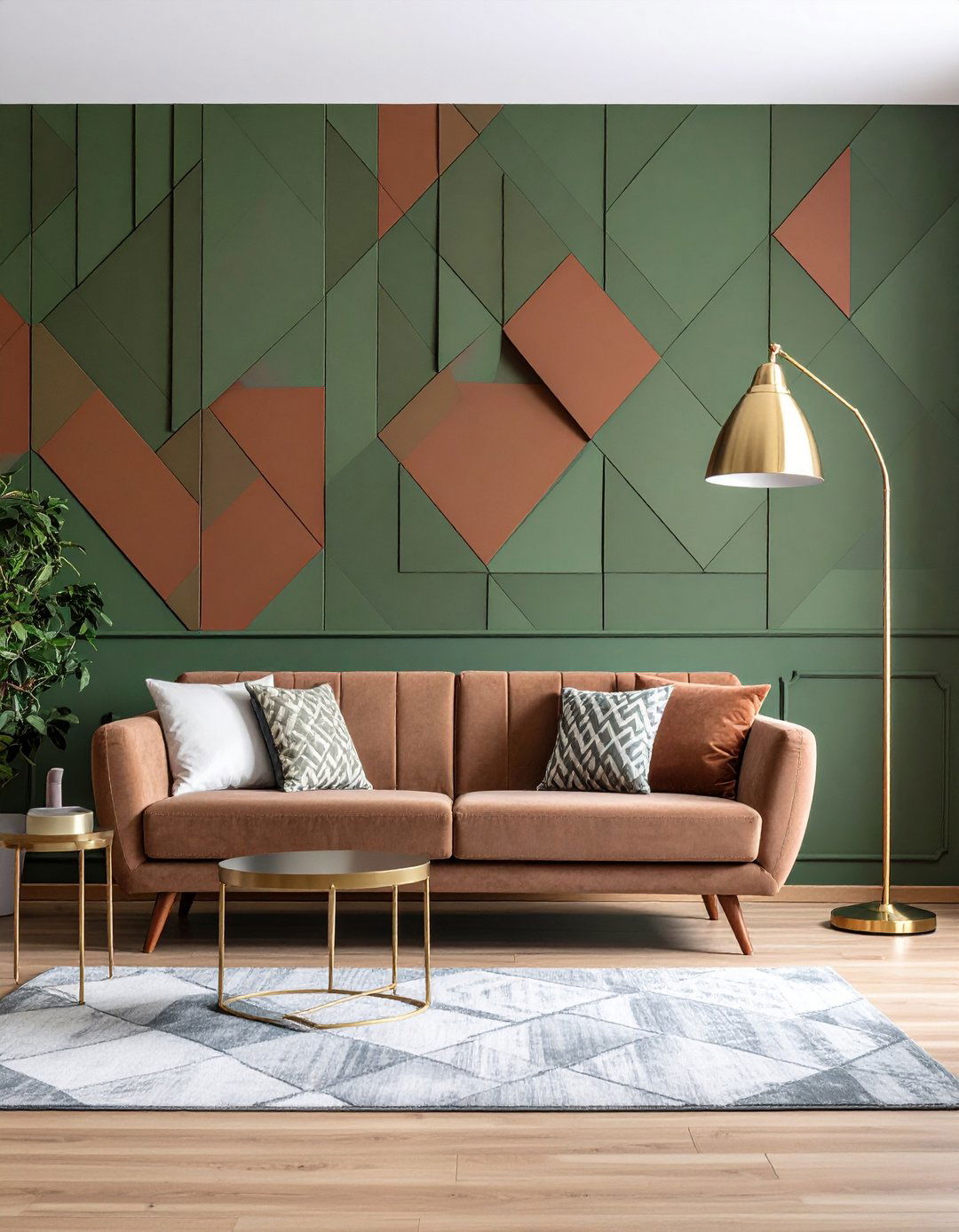
Eye-catching geometric wallpaper designs instantly transform ordinary walls into dynamic artistic statements that capture the fearless spirit of 1970s interior design. These bold patterns create visual energy and movement while serving as dramatic backdrops for furniture and accessories. Choose large-scale designs in warm earth tones like rust, gold, and olive green for authentic vintage appeal, or explore contemporary interpretations in updated color palettes. Use geometric wallpaper strategically on accent walls to avoid overwhelming spaces while still making powerful design statements. The repetitive nature of geometric patterns creates rhythm and flow that enhances room proportions and architectural features. Modern printing techniques ensure excellent color quality and durability while maintaining the authentic look of vintage designs. Pair geometric wallpaper with solid-colored furniture and natural textures to create balanced compositions that feel both exciting and harmonious.
8. Wood Paneling for Architectural Warmth
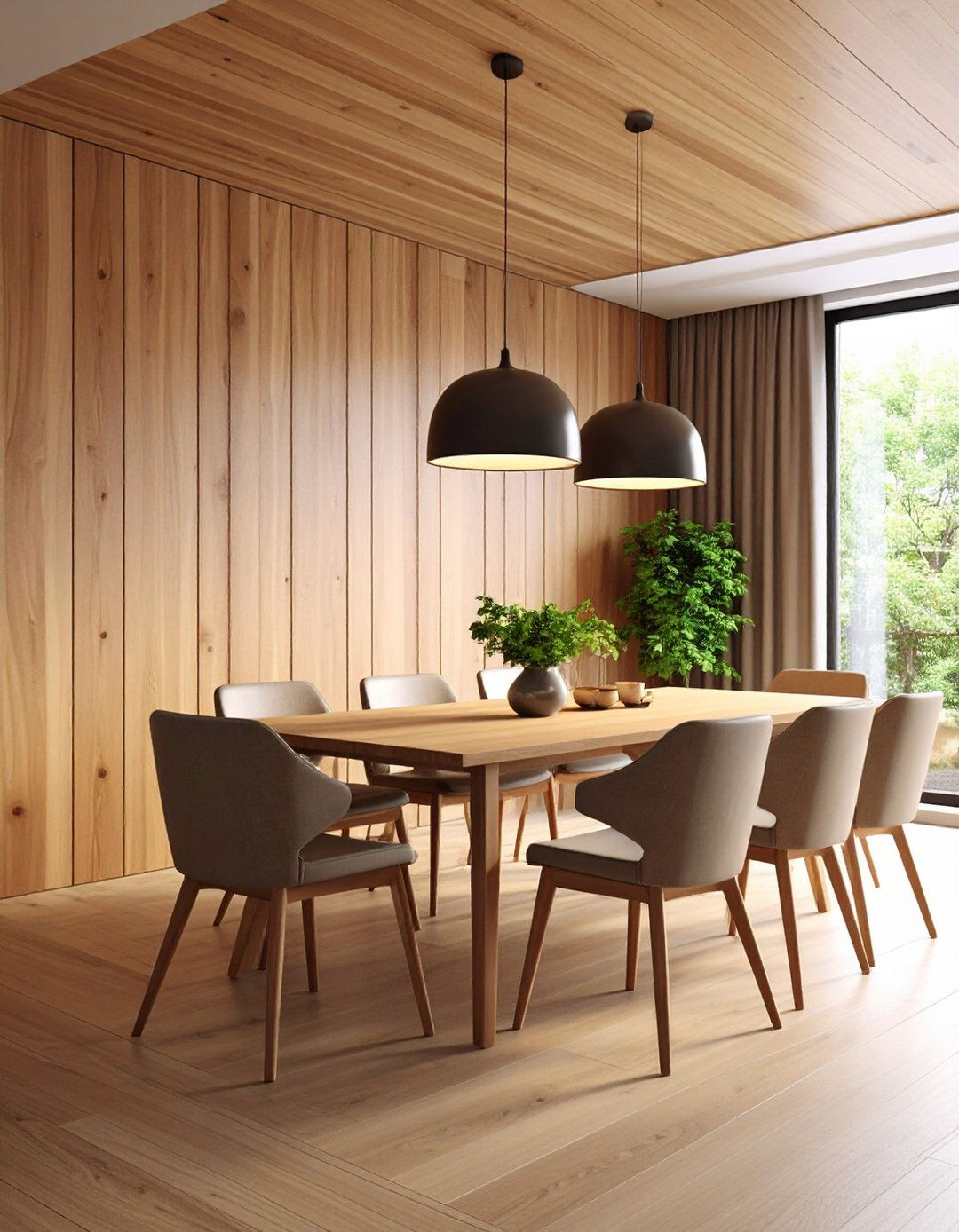
Rich wood paneling brings natural sophistication and architectural interest to 1970s-inspired interiors while creating cozy atmospheres that celebrate organic materials. This classic feature works beautifully in living rooms, dining areas, and home offices where it provides visual weight and textural contrast. Modern interpretations use sustainable wood species and improved installation techniques that maintain authentic appearance while offering better durability and maintenance. Choose medium-toned woods like walnut or oak for versatile styling options that complement various color schemes. Vertical paneling creates height illusions in rooms with lower ceilings, while horizontal applications can make spaces feel wider and more expansive. Consider partial paneling that covers lower wall sections while leaving upper areas for artwork or decorative elements. The natural warmth of wood paneling creates inviting environments that encourage relaxation and social interaction, perfectly capturing the 1970s emphasis on comfort and authenticity.
9. Terrazzo Flooring for Artistic Appeal
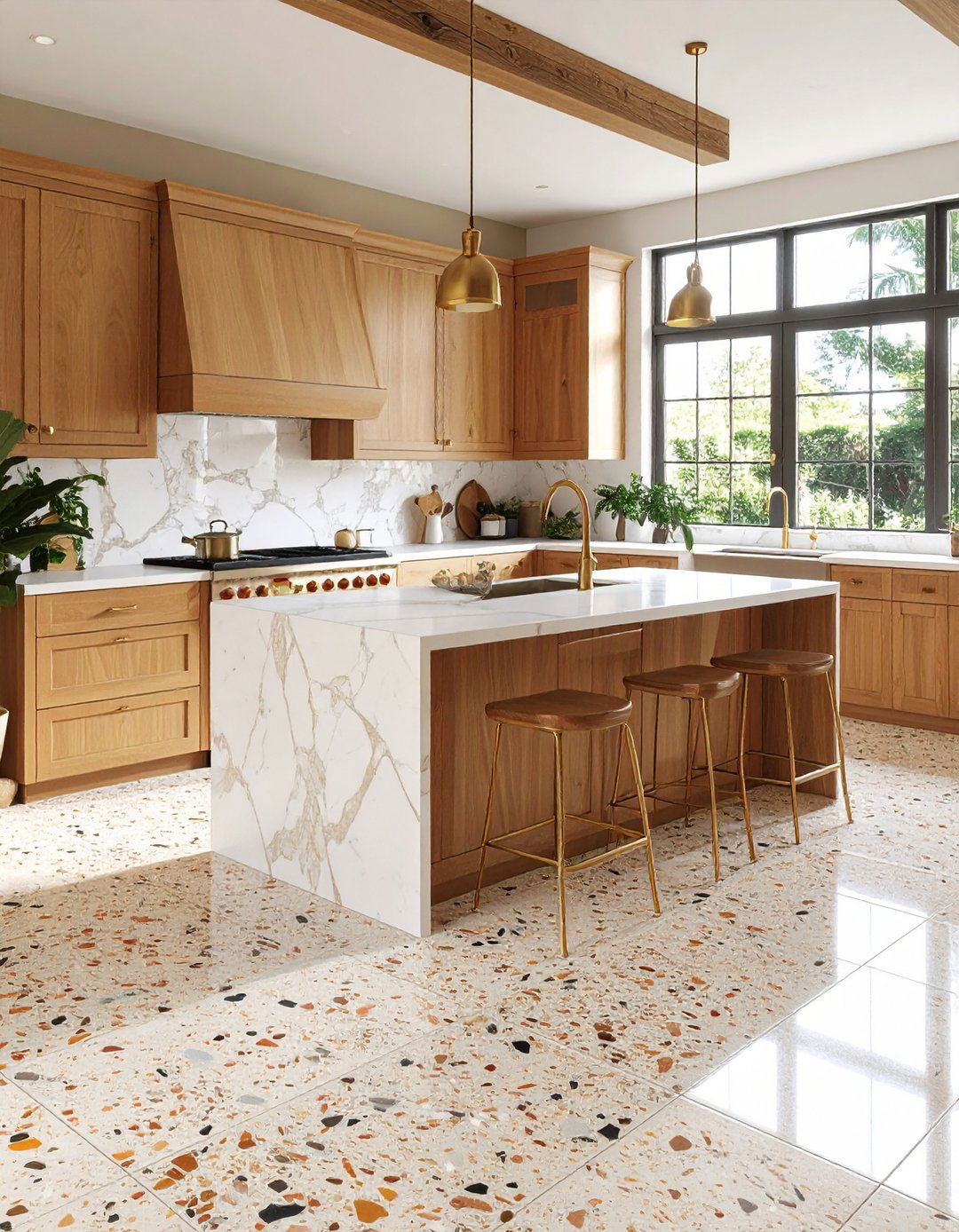
Distinctive terrazzo flooring brings artistic flair and sophisticated texture to 1970s-inspired spaces while providing durable, low-maintenance surfaces that age beautifully. This composite material combines marble, glass, and stone chips in colorful patterns that create unique, one-of-a-kind appearances. Choose warm earth tones with gold and brown accents for authentic vintage appeal, or explore contemporary color combinations that complement modern furnishings. Terrazzo works exceptionally well in kitchens, bathrooms, and entryways where durability is essential while style remains important. The speckled patterns add visual interest without overwhelming room designs, making terrazzo an excellent foundation for layered decorating schemes. Modern terrazzo options include eco-friendly formulations using recycled materials while maintaining the distinctive aesthetic that makes this flooring so appealing. Professional installation ensures proper sealing and finishing that protects surfaces while highlighting the material's natural beauty and unique character.
10. Hanging Egg Chairs for Cozy Retreats
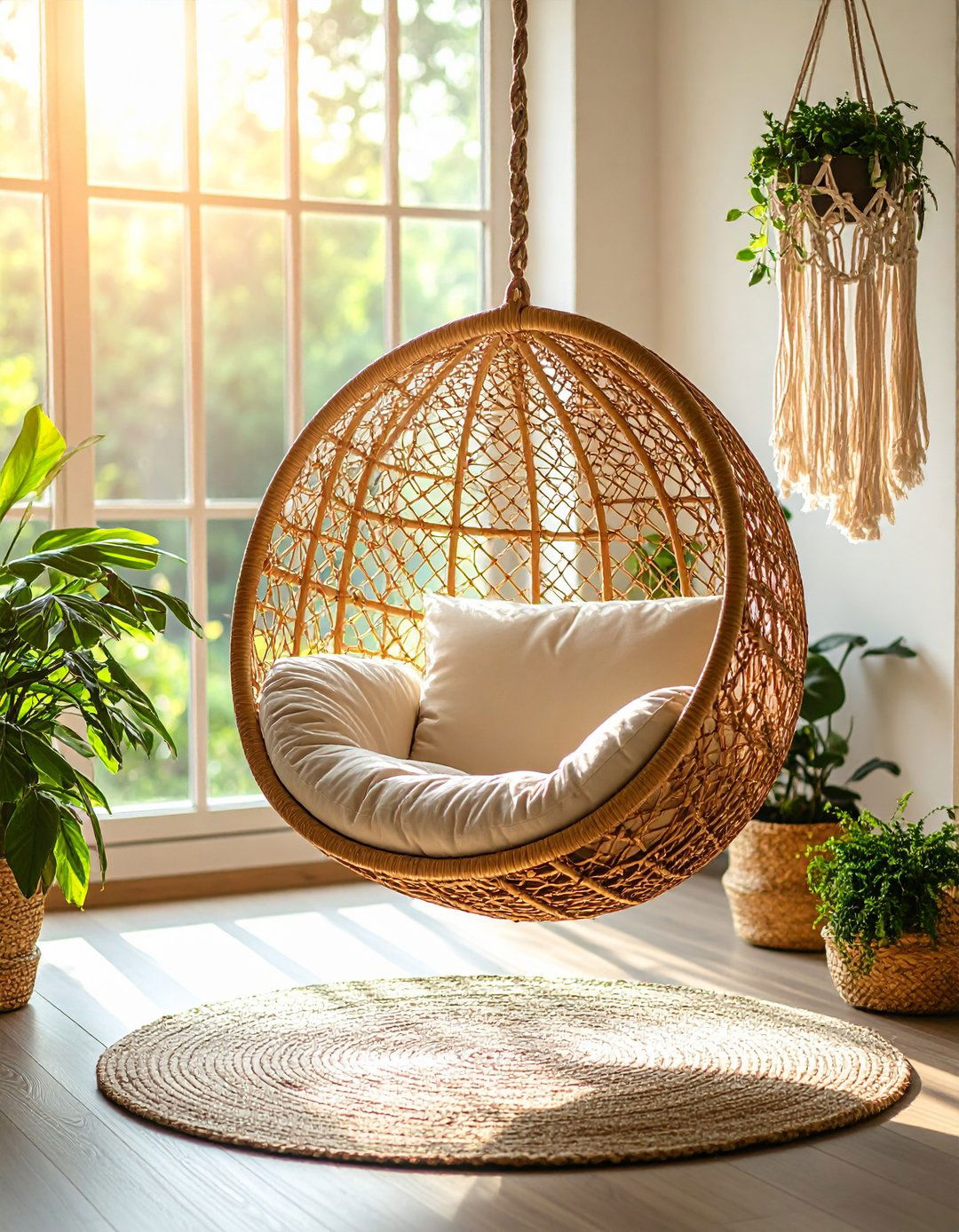
Suspended egg chairs create intimate retreats that perfectly capture the 1970s emphasis on comfort, relaxation, and unique furniture silhouettes. These sculptural seating options provide cozy hideaways for reading, meditation, or simply enjoying peaceful moments away from daily stress. Choose rattan or wicker construction for authentic natural appeal, or explore modern interpretations in weather-resistant materials suitable for outdoor use. Soft cushions in earthy tones or bold patterns enhance comfort while adding color and texture to room designs. The gentle swaying motion of hanging chairs adds a soothing element that promotes relaxation and stress relief. Position egg chairs in corners with good natural light for perfect reading nooks, or use them as accent pieces in living rooms where they serve as conversation starters. Modern hanging systems ensure safe, secure installation while maintaining the floating appearance that makes these chairs so visually appealing.
11. Burnt Orange Accents for Energetic Warmth
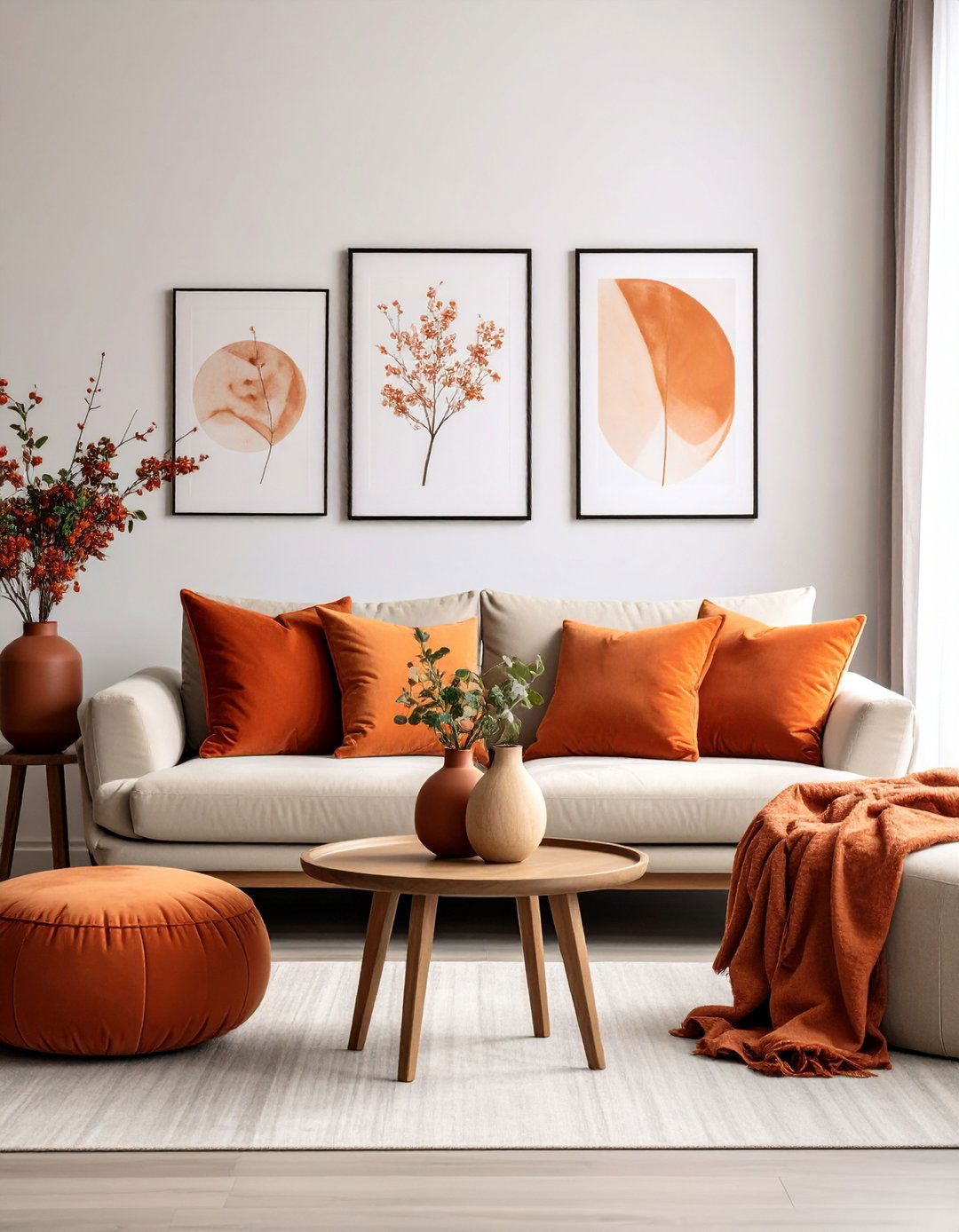
Vibrant burnt orange accents infuse 1970s-inspired spaces with energetic warmth while creating dynamic color schemes that celebrate the decade's bold aesthetic sensibilities. This distinctive hue works beautifully in throw pillows, artwork, ceramics, and textile accessories where it can make powerful statements without overwhelming room designs. Pair burnt orange with deep teal, mustard yellow, or chocolate brown for authentic vintage color combinations that feel both sophisticated and playful. The color's natural warmth makes spaces feel more inviting and cozy, particularly during cooler months when rich tones create comforting atmospheres. Modern interpretations often soften the intensity slightly, making burnt orange more accessible for contemporary decorating while maintaining its distinctive character. Use this versatile color in kitchens through backsplash tiles, ceramics, or small appliances that add personality without permanent commitment. The psychological impact of orange promotes creativity and social interaction, making it perfect for spaces designed for gathering and entertaining.
12. Curved Furniture Silhouettes for Organic Flow
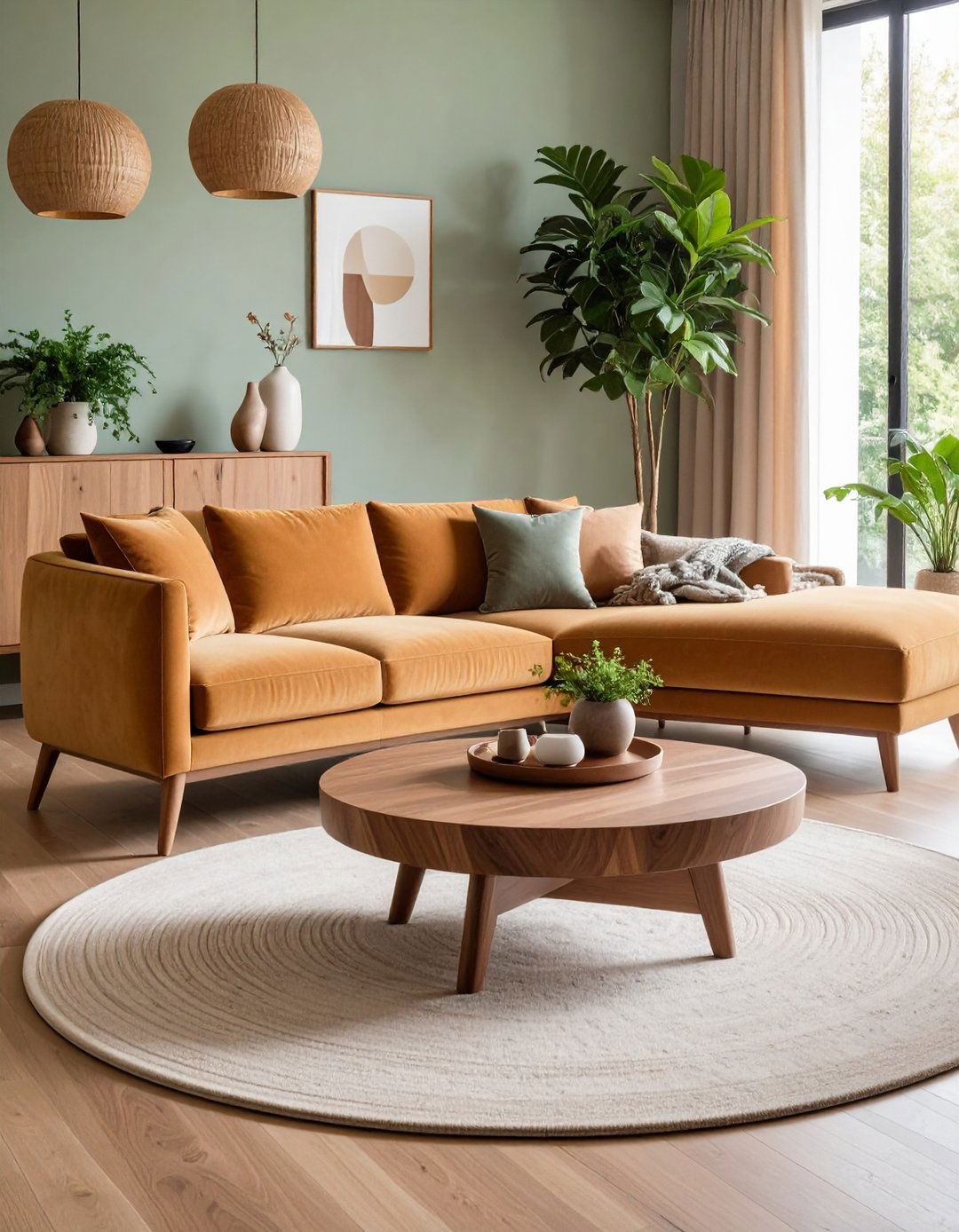
Sculptural curved furniture brings organic sophistication and visual softness to 1970s-inspired interiors while creating natural flow that enhances room circulation and comfort. These distinctive silhouettes challenge traditional angular furniture designs, offering unique alternatives that serve as functional art pieces. Choose curved sofas, round dining tables, or kidney-shaped coffee tables that capture the decade's emphasis on innovative design and comfort. The organic shapes create psychological comfort by eliminating sharp edges and harsh lines that can make spaces feel rigid or uninviting. Modern curved furniture often features improved construction techniques and materials that ensure durability while maintaining the distinctive aesthetic appeal. Use curved pieces strategically to soften room compositions and create interesting visual contrast with architectural elements. The timeless appeal of organic shapes ensures these furniture pieces remain stylish while adapting to changing decorating trends and personal preferences over time.
13. Earth Tone Ceramic Pottery for Artisanal Character
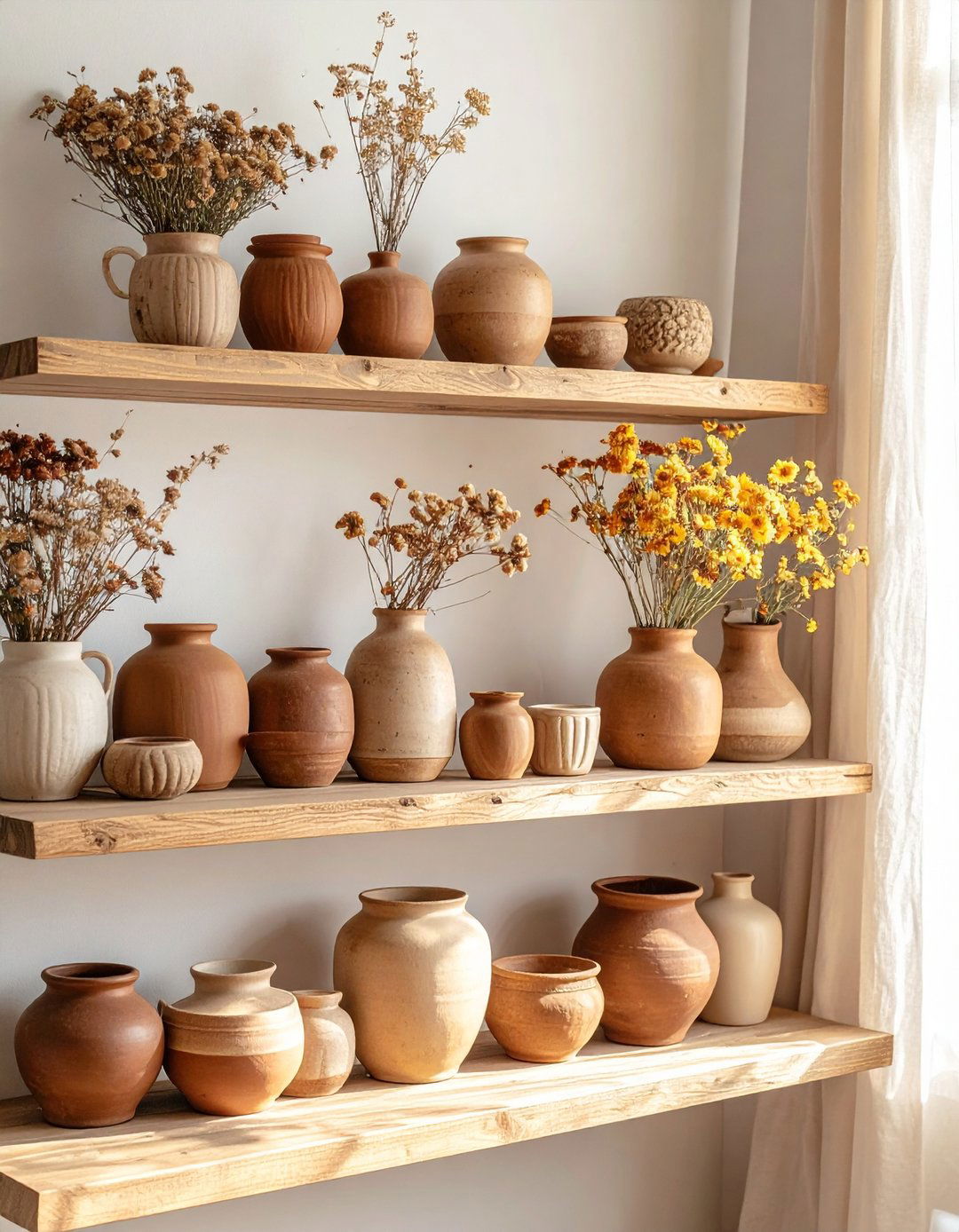
Handcrafted ceramic pottery in rich earth tones brings artisanal character and natural beauty to 1970s-inspired spaces while celebrating the decade's appreciation for craftsmanship and organic materials. These functional art pieces serve as both decorative elements and practical storage solutions throughout the home. Choose pieces in warm browns, russet oranges, and deep ochres that complement earthy color schemes while adding textural interest to shelving and surfaces. The irregular shapes and hand-thrown quality of artisanal pottery create unique character that mass-produced items cannot match. Use large floor pots as plant containers or sculptural elements that anchor room corners and create vertical interest. Smaller pieces work beautifully for displaying dried flowers, storing small items, or simply adding organic shapes to tabletops and mantels. Modern ceramic artists continue creating pieces inspired by 1970s aesthetics while incorporating contemporary techniques and glazing methods.
14. Mustard Yellow Kitchen Cabinets for Retro Charm
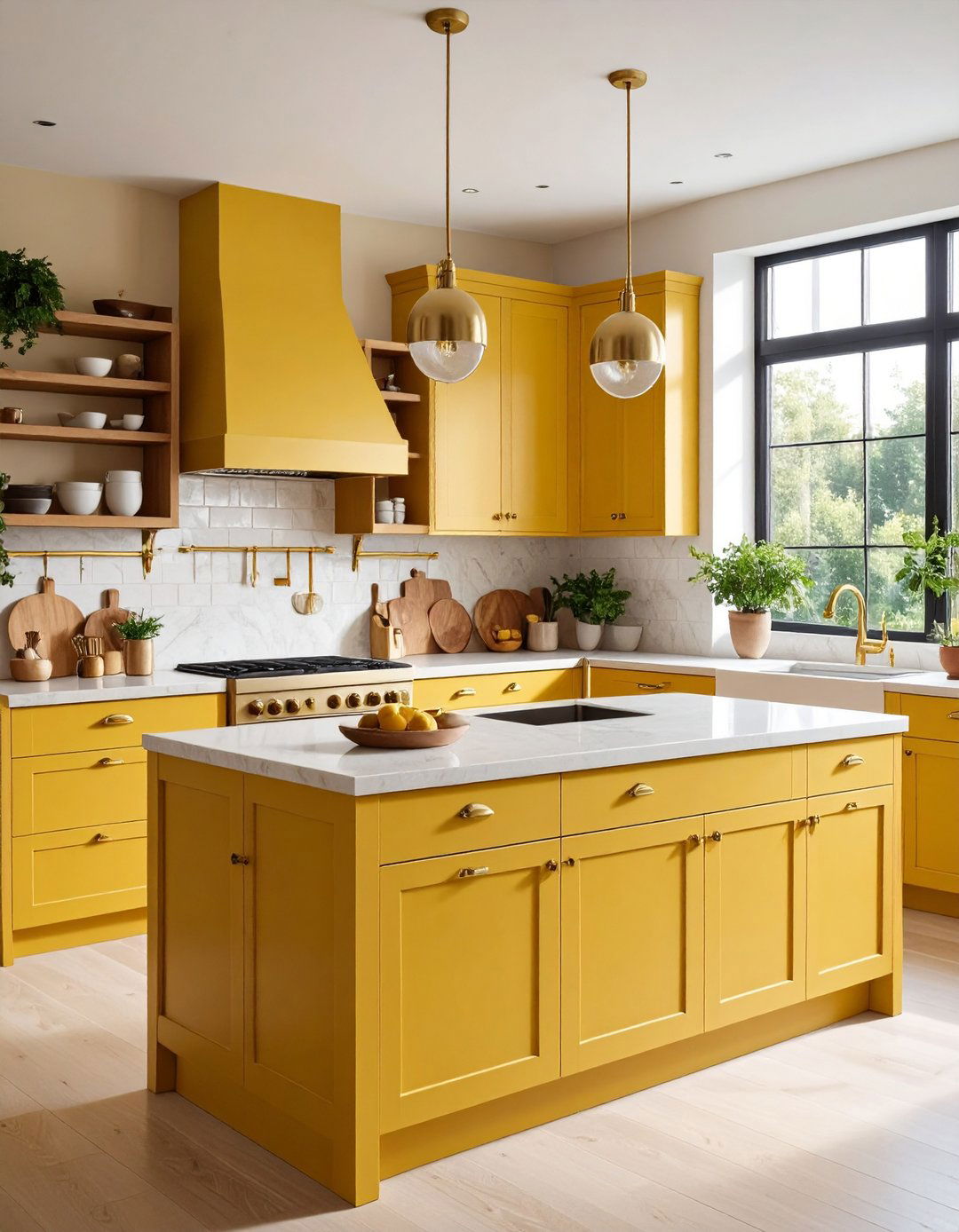
Bold mustard yellow kitchen cabinets create stunning focal points that instantly transform cooking spaces into groovy 1970s-inspired environments full of personality and warmth. This distinctive color choice demonstrates confidence and creativity while providing cheerful backgrounds for daily meal preparation and family gatherings. The warm undertones of mustard yellow complement natural wood elements, brass hardware, and earth-toned backsplashes beautifully. Modern cabinet construction techniques ensure durability and functionality while maintaining the authentic color that makes these kitchens so memorable. Pair mustard cabinets with white or cream countertops to create balance and prevent overwhelming smaller spaces. The color's inherent optimism makes kitchens feel more inviting and energetic, encouraging family interaction and social cooking experiences. Contemporary interpretations often feature high-quality paints and finishes that resist fading and wear while maintaining the vibrant appearance that makes mustard yellow such an appealing choice for adventurous homeowners.
15. Brass Hardware and Fixtures for Metallic Glamour
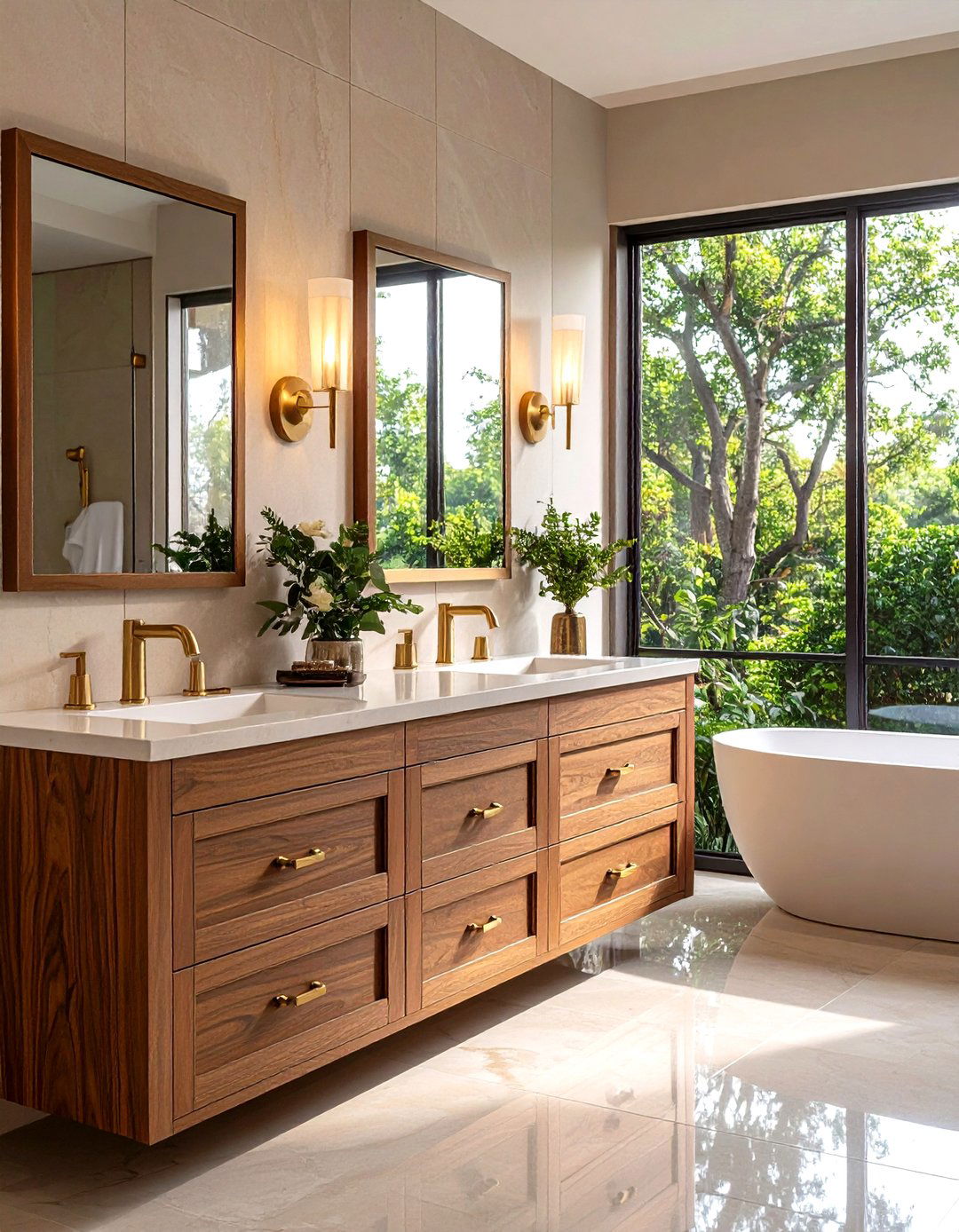
Gleaming brass hardware and fixtures add sophisticated metallic glamour to 1970s-inspired interiors while providing durable, functional elements that enhance both style and practicality. This warm metal complements earth-toned color schemes beautifully while creating elegant contrast with natural materials like wood and rattan. Choose brass drawer pulls, cabinet handles, light fixtures, and plumbing fixtures that coordinate throughout your home for cohesive design appeal. The material's natural antimicrobial properties make it practical for frequently touched surfaces while its timeless beauty ensures lasting style appeal. Modern brass finishes often feature protective coatings that prevent tarnishing while maintaining the authentic warm glow that makes this metal so desirable. Use brass accents strategically in kitchens, bathrooms, and furniture pieces where they can make subtle yet impactful statements. The material's ability to age gracefully adds character over time, developing natural patina that enhances rather than detracts from overall appearance.
16. Sunken Living Areas for Architectural Interest

Dramatic sunken living areas create distinctive architectural features that capture the innovative spirit of 1970s design while providing unique spaces for relaxation and entertainment. These recessed zones naturally define separate areas within open floor plans without requiring walls or dividers that can make spaces feel closed off. Modern interpretations often use strategic furniture placement and area rugs to create the visual effect of sunken areas without structural modifications. The lowered perspective creates intimate atmospheres that encourage conversation and social interaction among family members and guests. Built-in seating with plush cushions maximizes comfort while maintaining clean lines that enhance architectural appeal. Consider adding fireplace features or distinctive lighting to enhance the cozy atmosphere that makes sunken areas so appealing. The design concept works particularly well in homes with high ceilings where the level change creates interesting visual dynamics and improved room proportions.
17. Psychedelic Art Prints for Visual Energy

Vibrant psychedelic art prints bring explosive color and visual energy to 1970s-inspired spaces while celebrating the decade's embrace of artistic experimentation and creative expression. These bold artworks create powerful focal points that instantly establish period-appropriate atmosphere and demonstrate personal style confidence. Choose large-scale prints with swirling patterns, kaleidoscopic colors, and abstract compositions that capture the era's free-spirited aesthetic. The dynamic nature of psychedelic art creates movement and excitement that can energize otherwise neutral room compositions. Modern reproductions often use archival printing techniques that ensure color longevity while maintaining the authentic appearance of original artwork. Frame prints in simple profiles that don't compete with the artwork's inherent drama and complexity. Use psychedelic art strategically in living rooms, bedrooms, or creative spaces where bold visual statements enhance rather than overwhelm the overall design composition. The nostalgic appeal of these pieces creates conversation starters while demonstrating appreciation for artistic innovation.
18. Lava Lamps for Ambient Lighting

Mesmerizing lava lamps provide unique ambient lighting that perfectly captures the playful, innovative spirit of 1970s design while creating soothing atmospheric effects. These iconic fixtures combine function with entertainment, offering gentle illumination alongside hypnotic visual displays that promote relaxation and contemplation. Choose classic designs in warm colors like orange, red, or yellow that complement earth-toned decorating schemes, or explore contemporary versions in updated colors and sizes. The slow, flowing motion of heated wax creates meditative effects that can help reduce stress and promote peaceful environments. Modern lava lamps feature improved heating elements and safety features while maintaining the distinctive aesthetic that makes these fixtures so appealing. Use lava lamps as accent lighting in bedrooms, living rooms, or creative spaces where their unique character enhances rather than dominates the overall lighting scheme. The nostalgic appeal of these fixtures creates conversation pieces that demonstrate appreciation for innovative design and playful sophistication.
19. Cork Flooring for Natural Sustainability
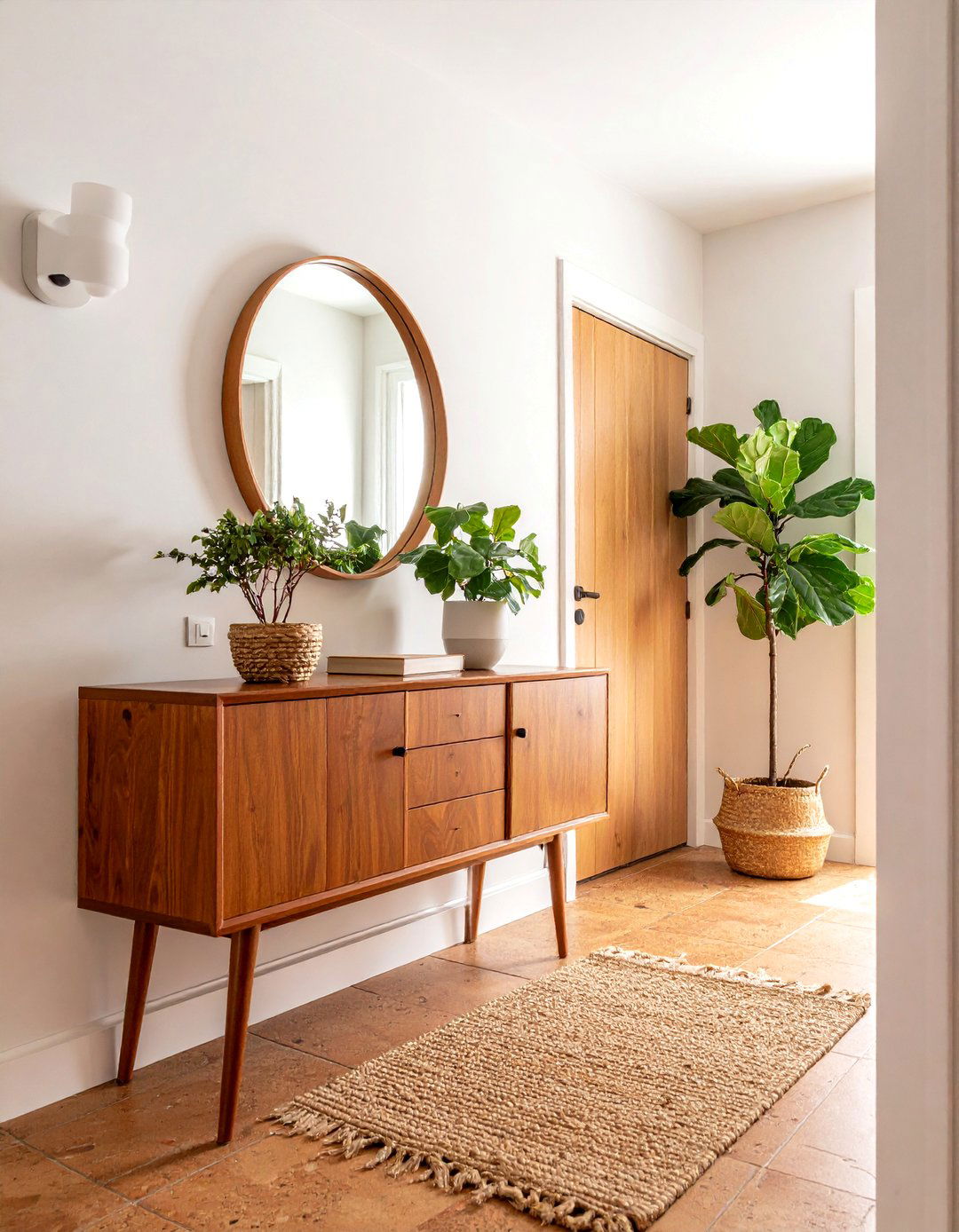
Sustainable cork flooring brings natural warmth and eco-friendly appeal to 1970s-inspired interiors while providing comfortable, durable surfaces that age beautifully over time. This renewable material offers excellent insulation properties and natural antimicrobial characteristics that promote healthy indoor environments. The distinctive texture and warm color of cork complement earth-toned decorating schemes while adding organic appeal that enhances connection to nature. Modern cork flooring features improved manufacturing processes and protective finishes that ensure longevity while maintaining the authentic appearance that makes this material so desirable. The material's natural resilience provides comfortable surfaces for standing and walking while offering sound-dampening benefits that create quieter living environments. Choose cork tiles in various sizes and patterns to create custom layouts that enhance room proportions and architectural features. The sustainable harvesting process makes cork an environmentally responsible choice that aligns with contemporary values while celebrating natural materials.
20. Modular Seating Systems for Flexible Arrangements
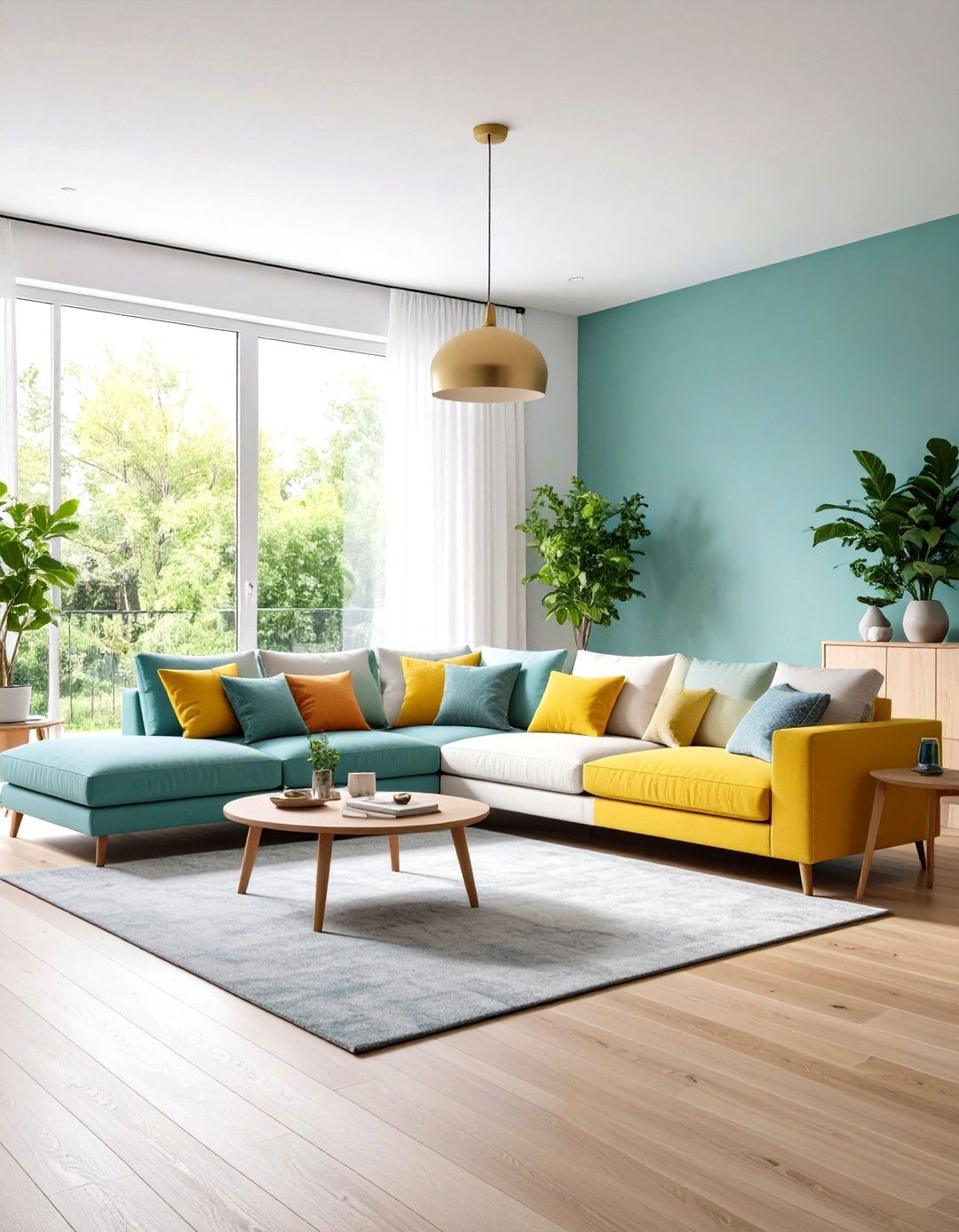
Innovative modular seating systems embody the 1970s emphasis on flexibility and casual comfort while providing adaptable furniture solutions that evolve with changing needs and preferences. These versatile pieces allow creative arrangements that can accommodate different occasions, from intimate conversations to large gatherings. Choose units with removable cushions and washable covers that maintain appearance while providing practical maintenance benefits. The low-profile design typical of modular systems creates relaxed atmospheres that encourage casual interaction and comfortable lounging. Modern modular furniture often features improved construction techniques and materials that ensure durability while maintaining the distinctive aesthetic appeal. Use modular pieces to create custom configurations that maximize space efficiency in smaller rooms or define separate zones in open floor plans. The ability to reconfigure seating arrangements provides ongoing flexibility that adapts to changing lifestyle needs while maintaining the sophisticated yet casual atmosphere that makes 1970s-inspired design so enduringly appealing.
Conclusion:
The enduring appeal of 1970s design lies in its perfect balance of bold creativity and comfortable functionality, creating spaces that celebrate both individuality and relaxation. These timeless elements continue to inspire modern homeowners who appreciate the decade's fearless approach to color, texture, and innovative thinking. By incorporating authentic materials like rattan and velvet alongside distinctive features such as conversation pits and geometric patterns, you can create contemporary spaces that honor the past while meeting present-day needs. The key to successful 1970s-inspired design lies in thoughtful selection and strategic placement of period elements, allowing you to capture the era's groovy spirit without overwhelming your living spaces. Whether you choose to embrace bold earth tones, luxurious textures, or innovative furniture silhouettes, these design ideas offer endless possibilities for creating homes that feel both nostalgically familiar and refreshingly unique.


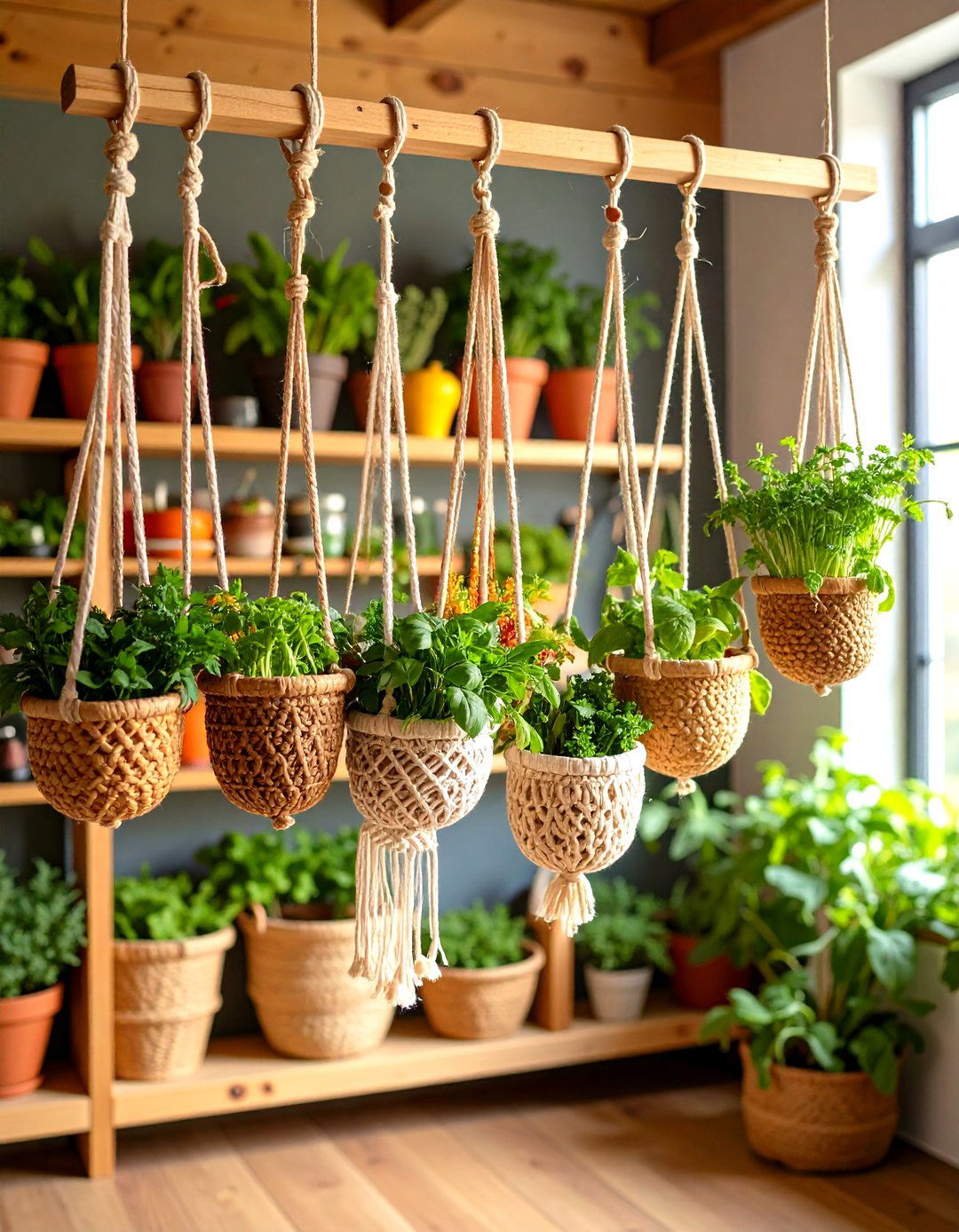
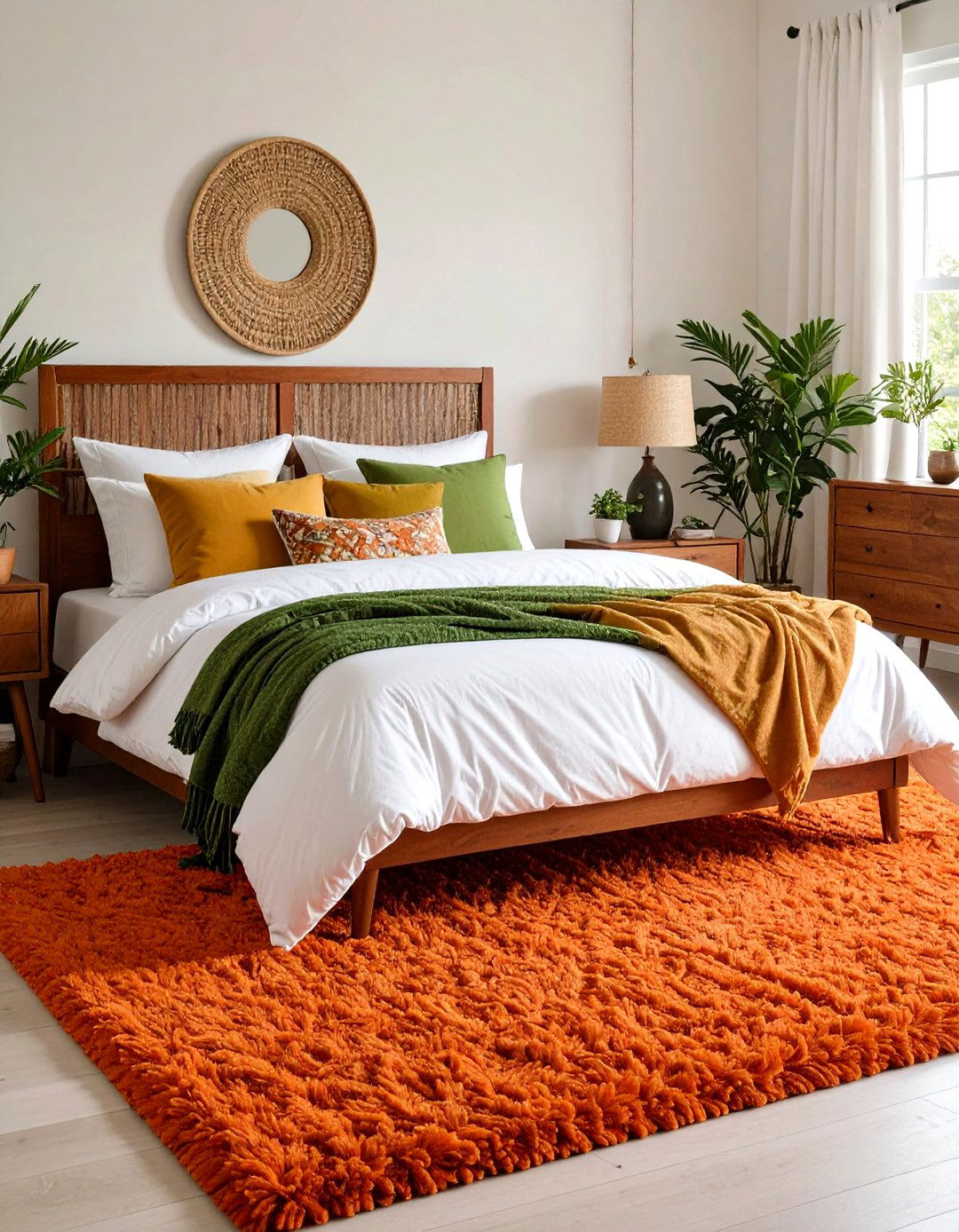
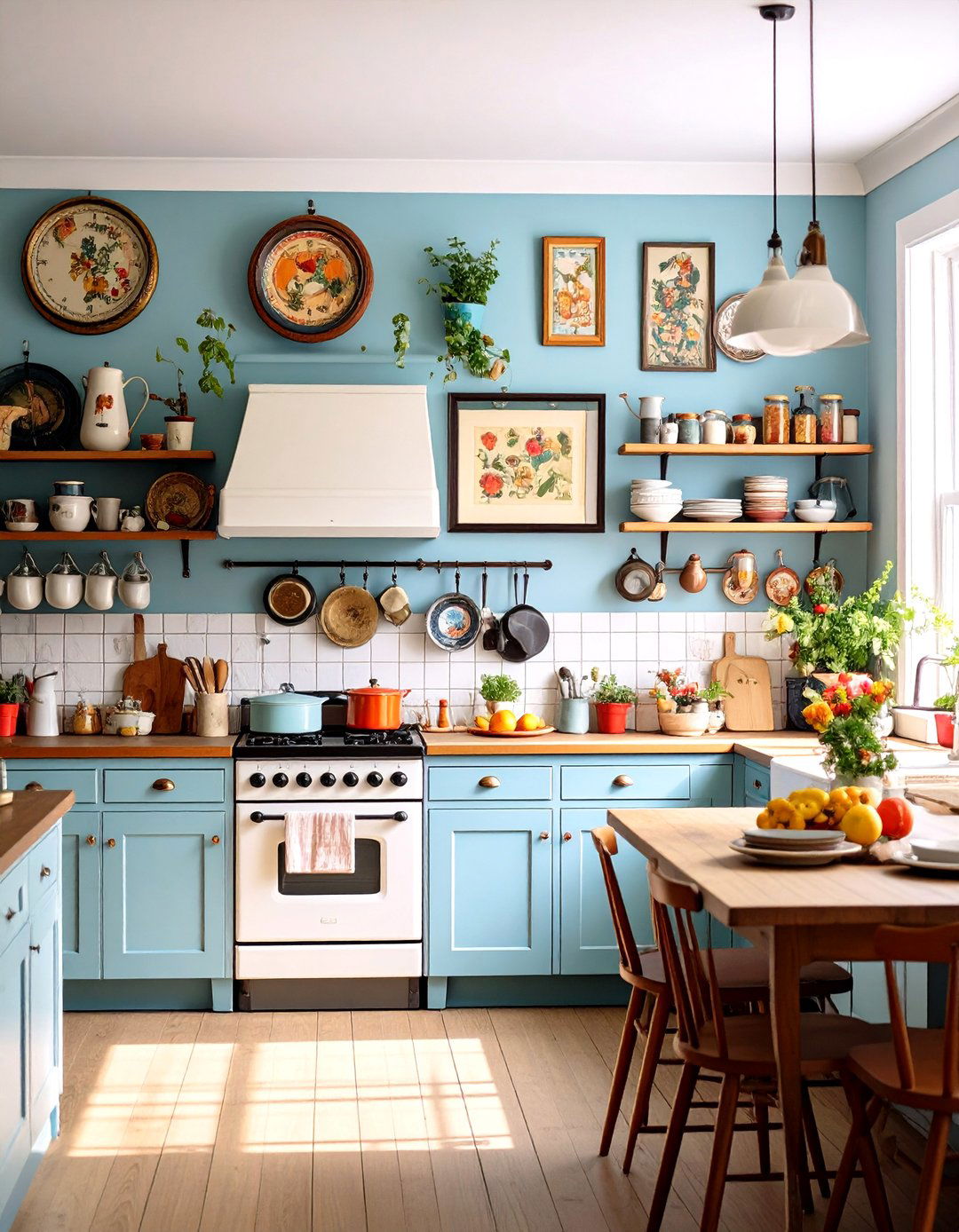
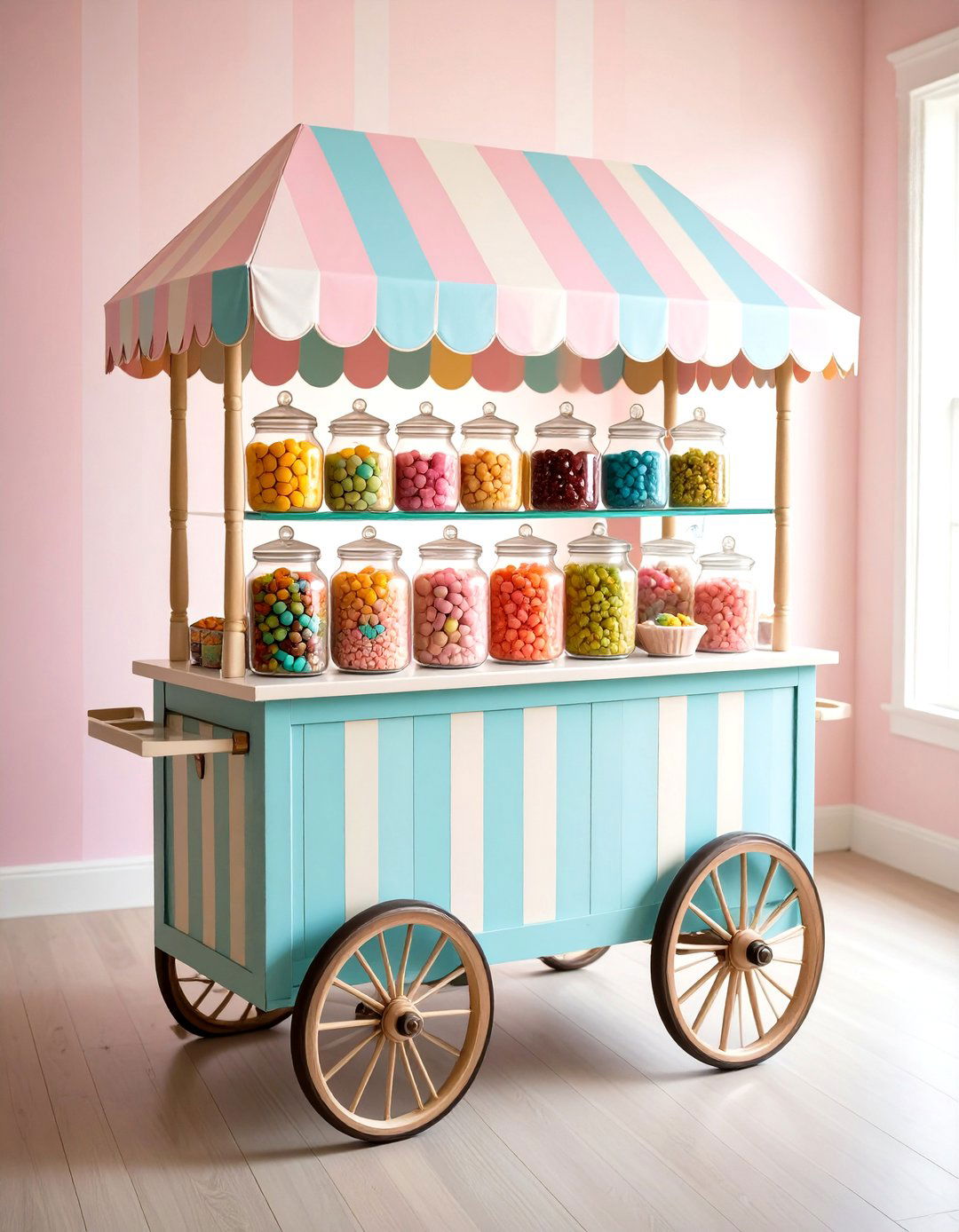
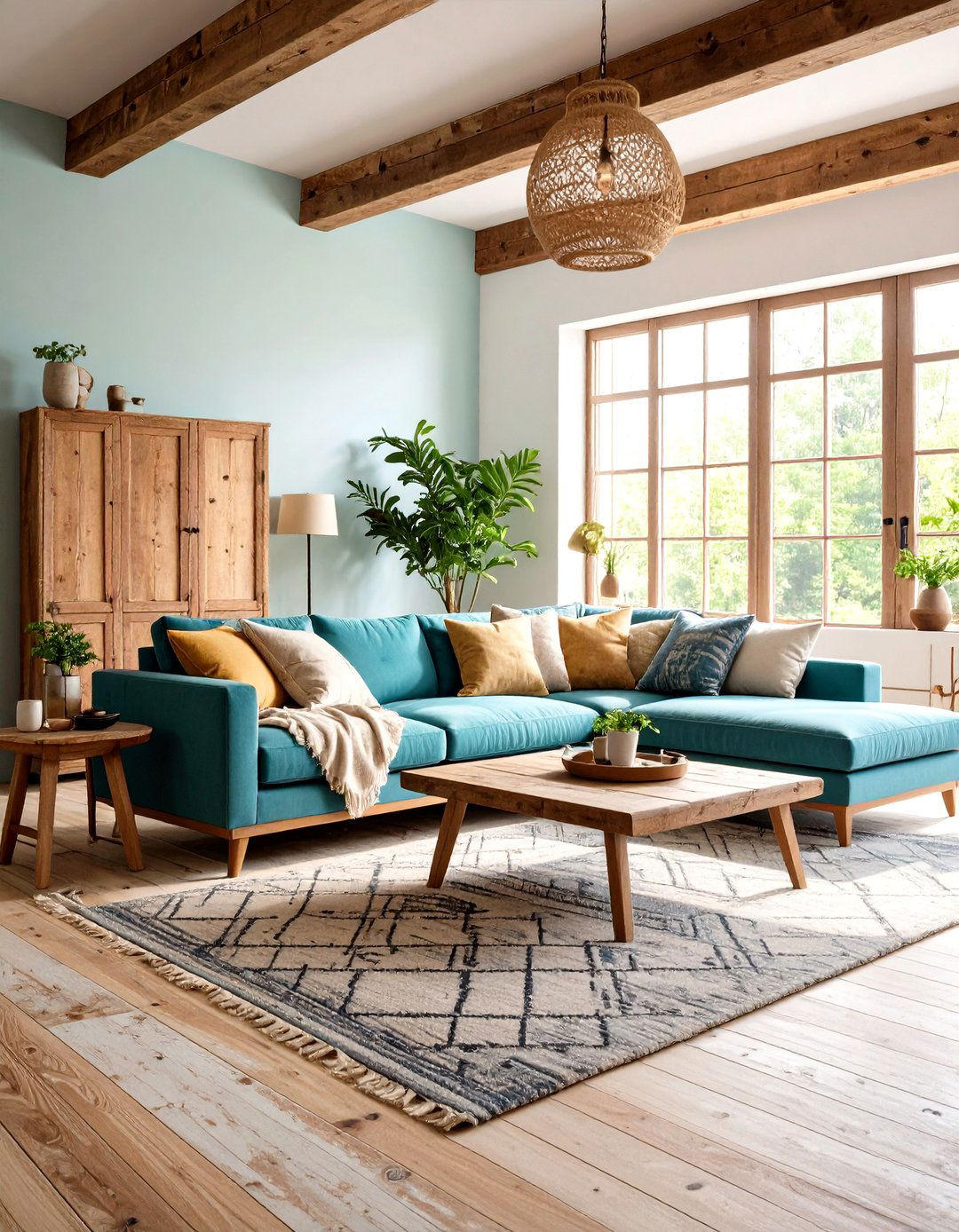
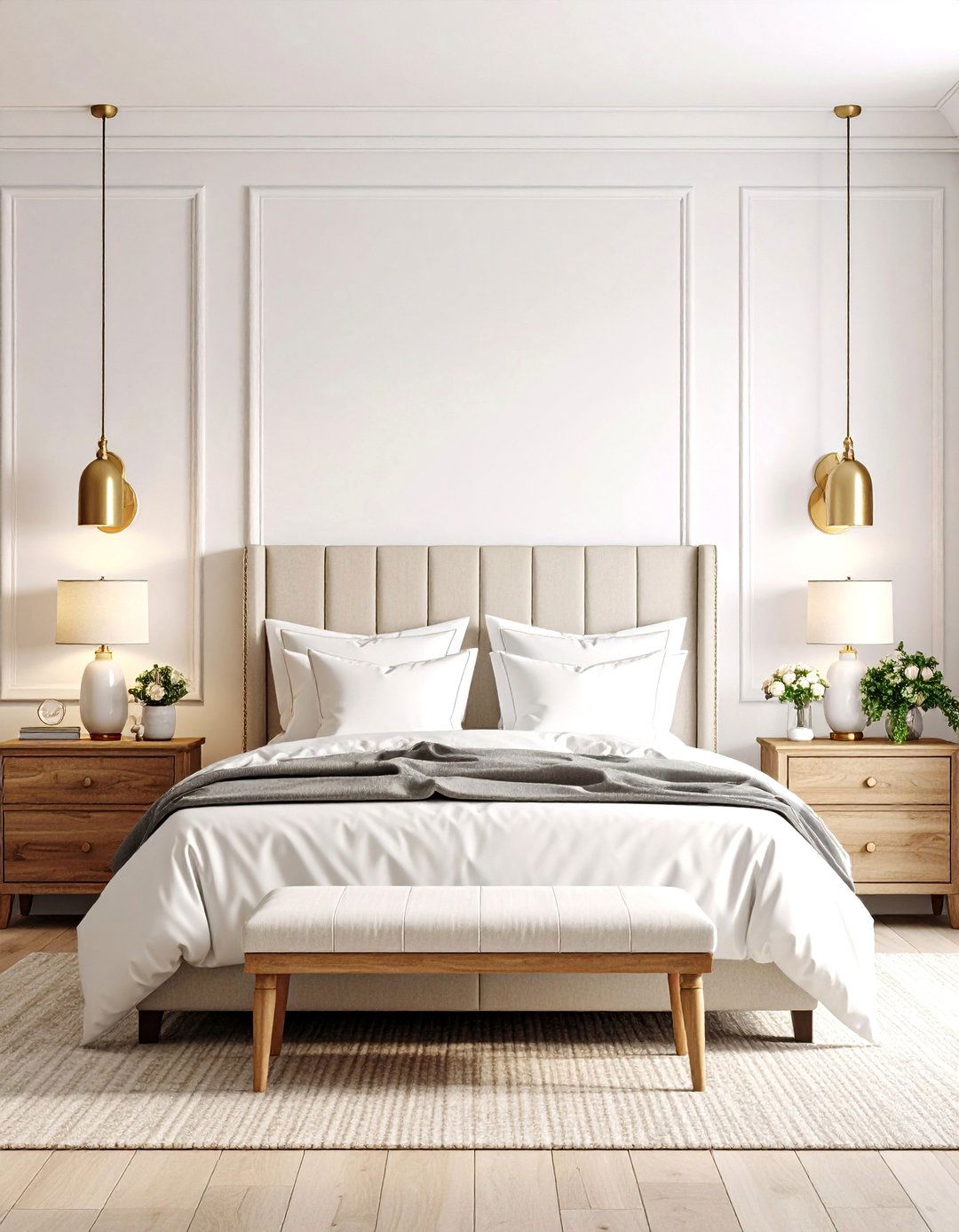
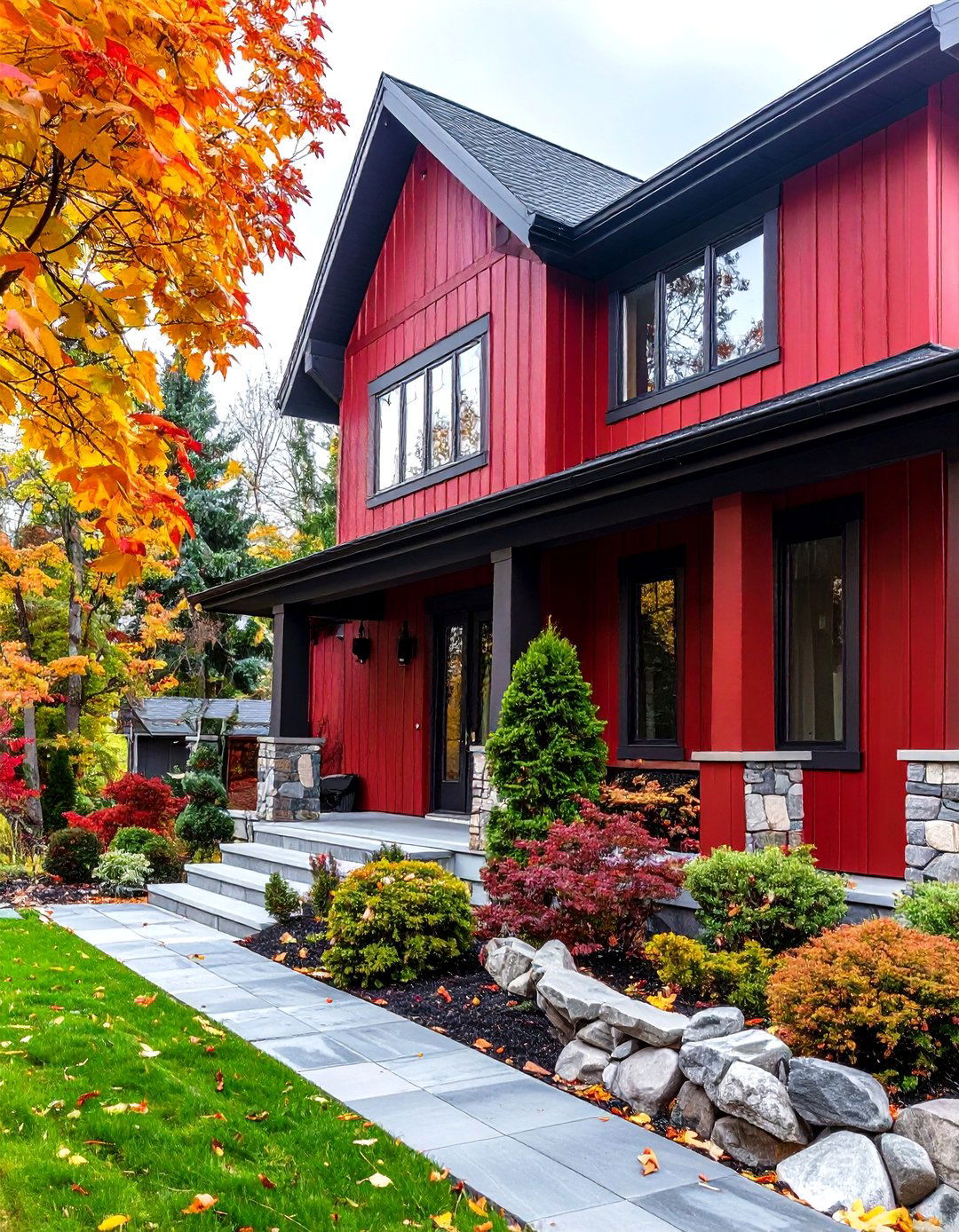
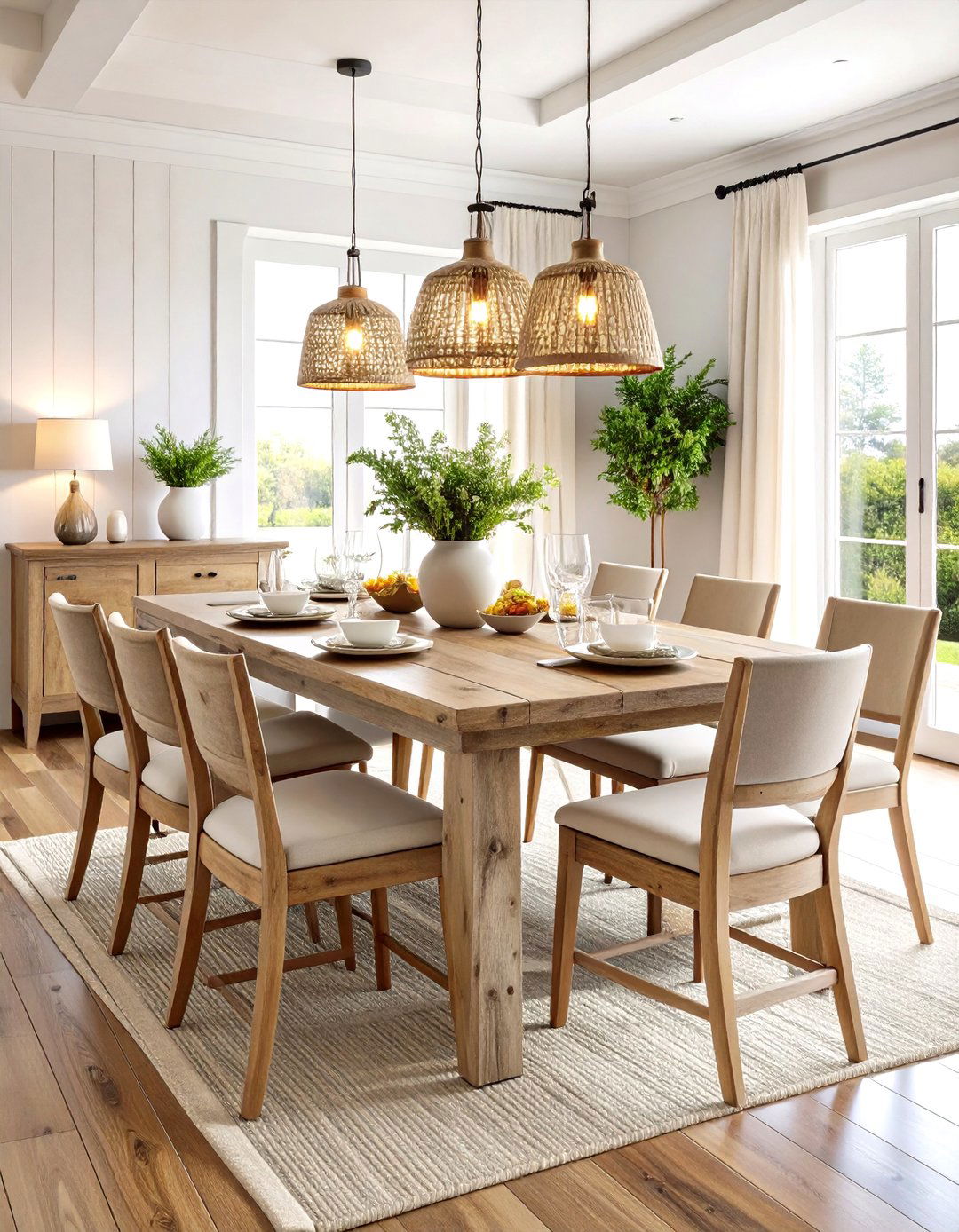
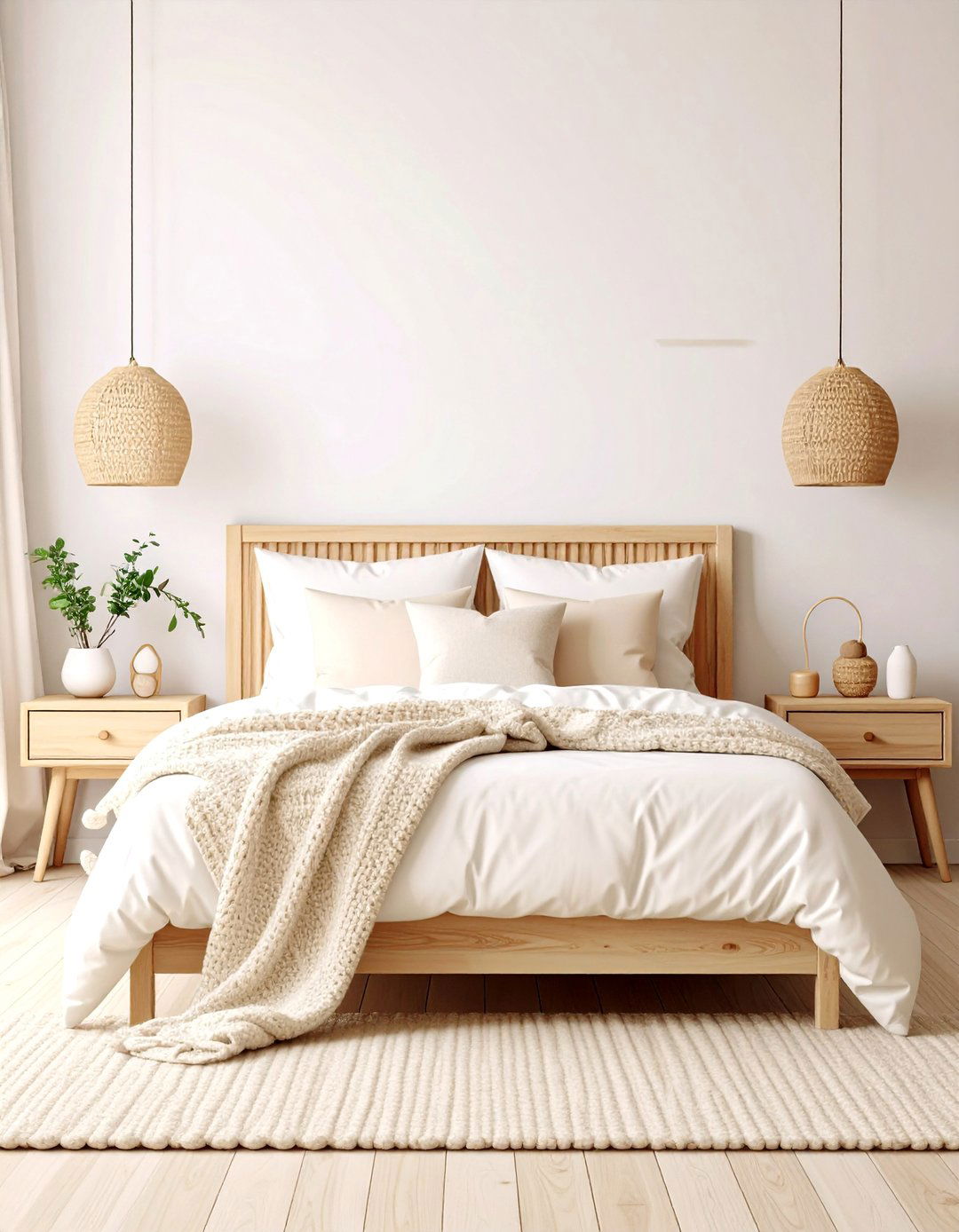
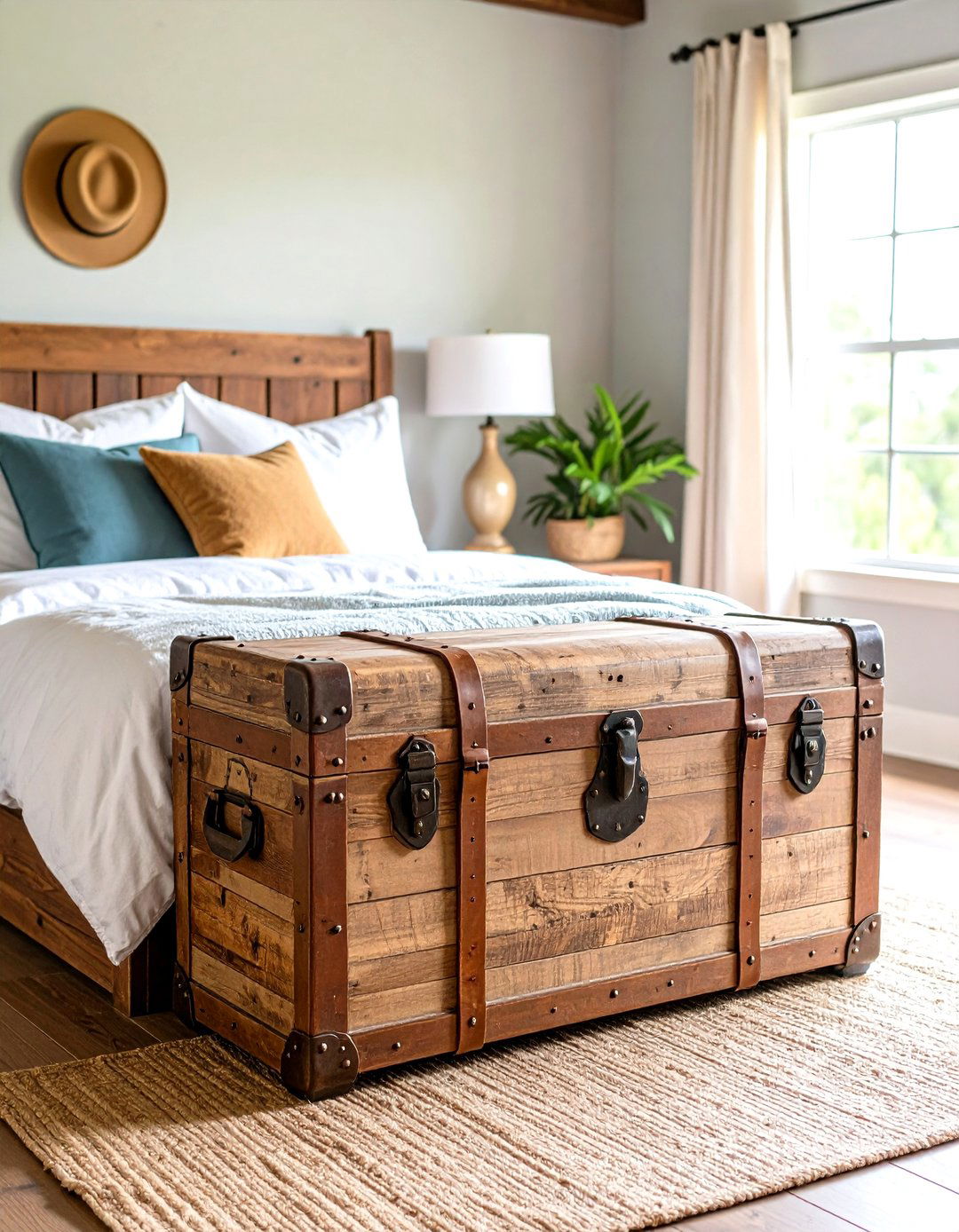

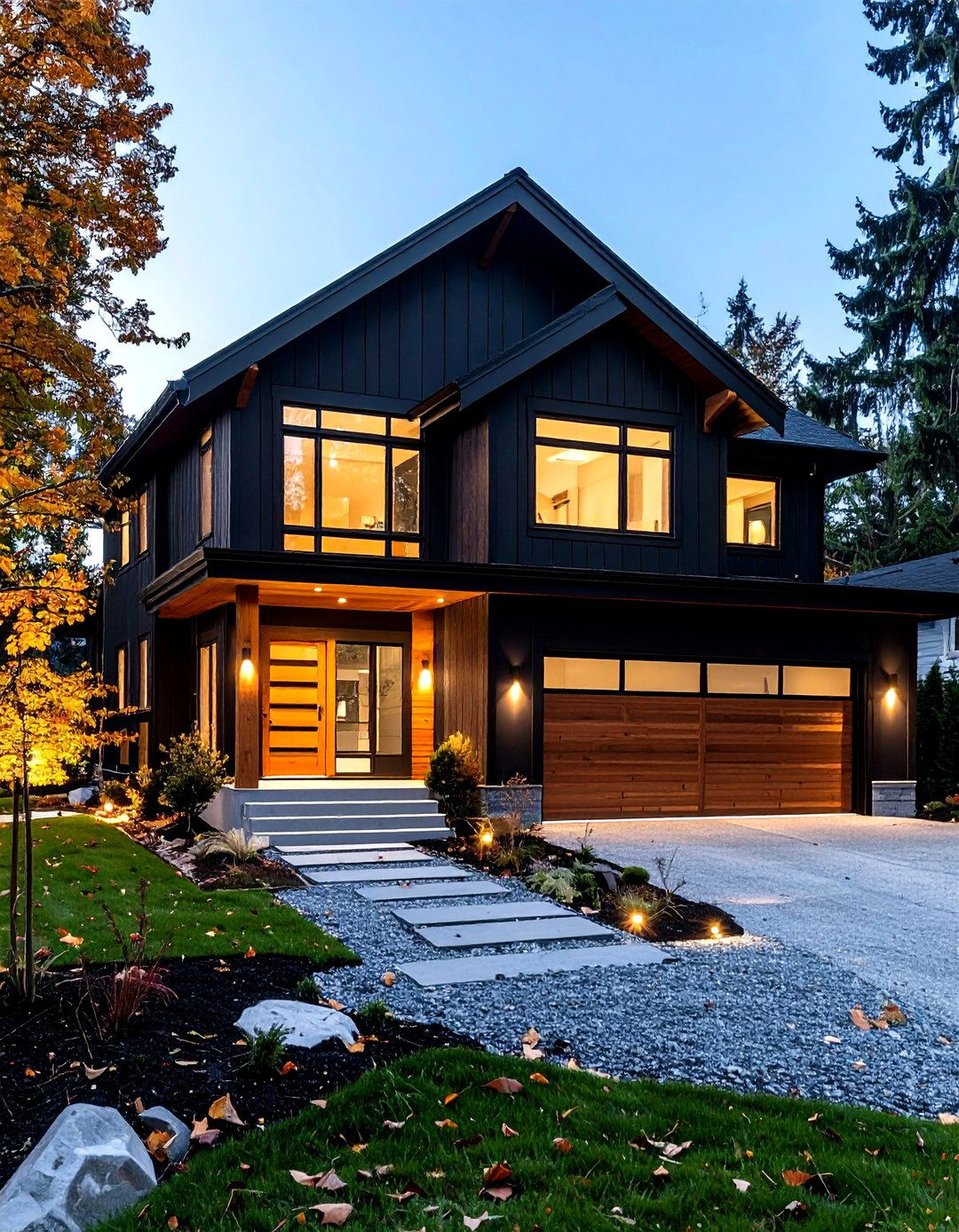
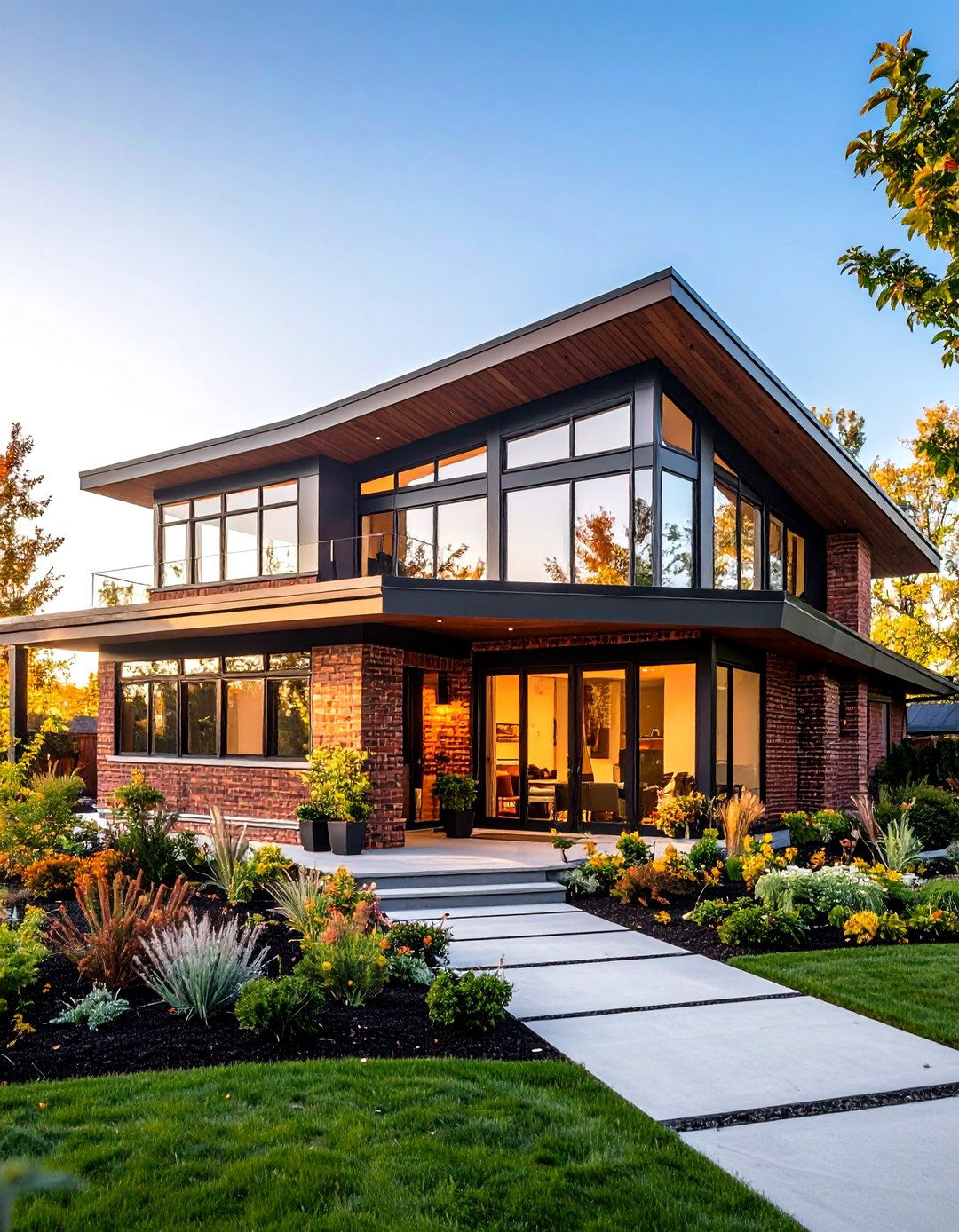

Leave a Reply